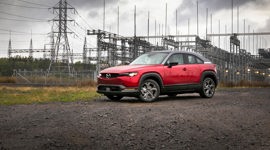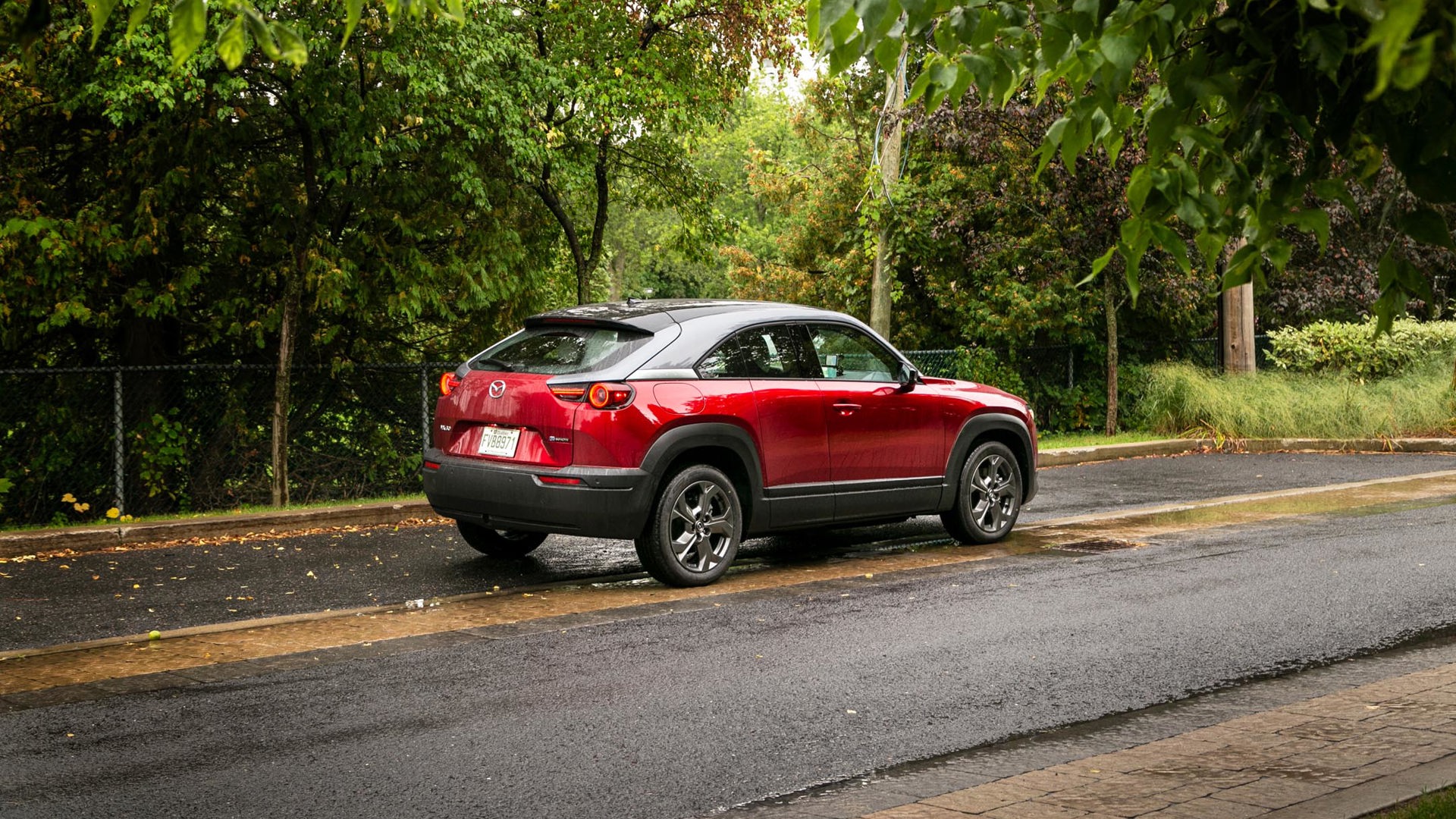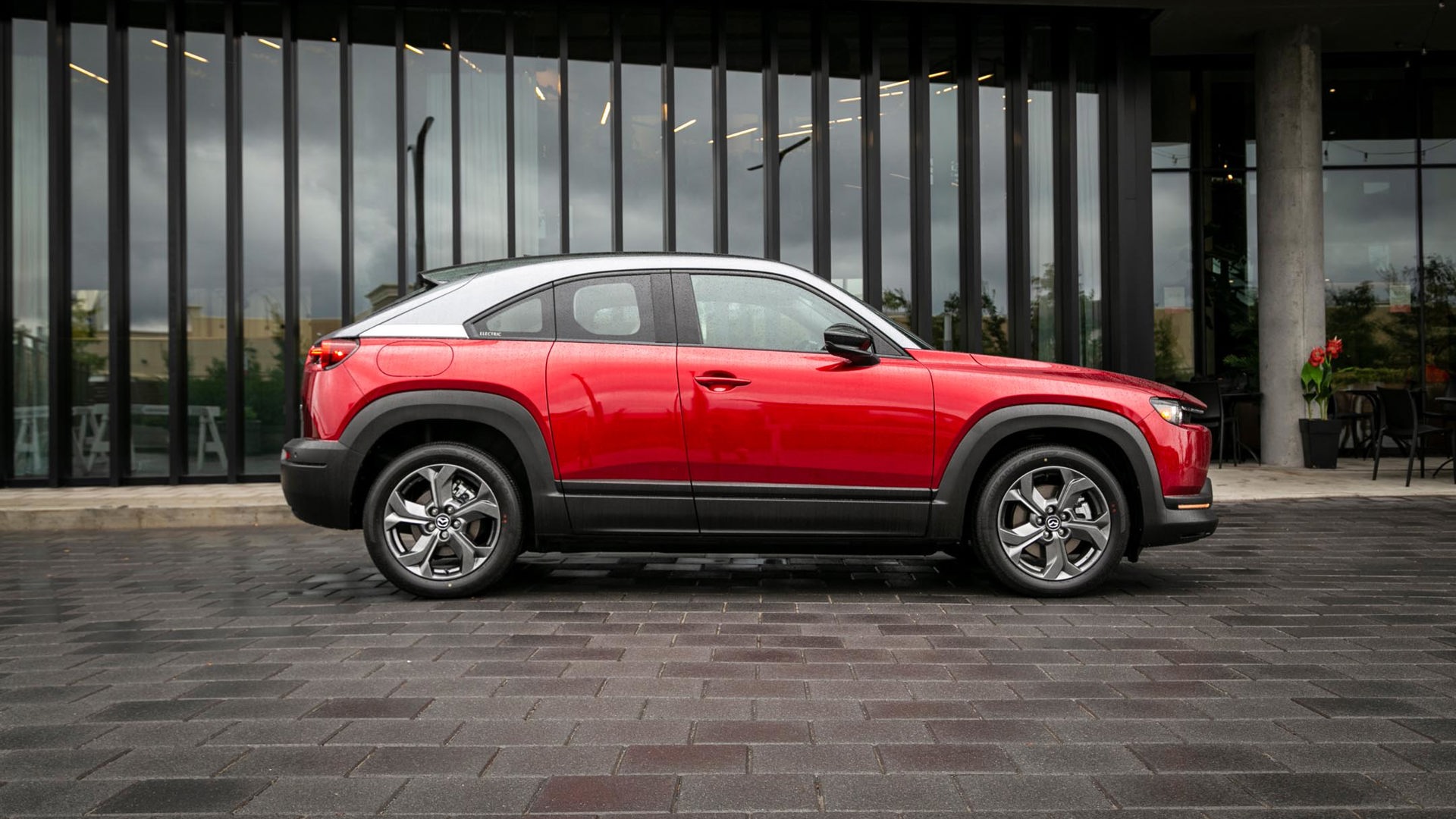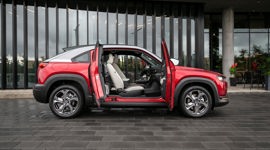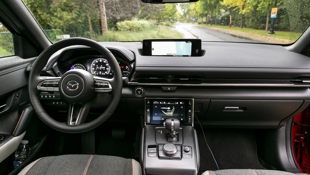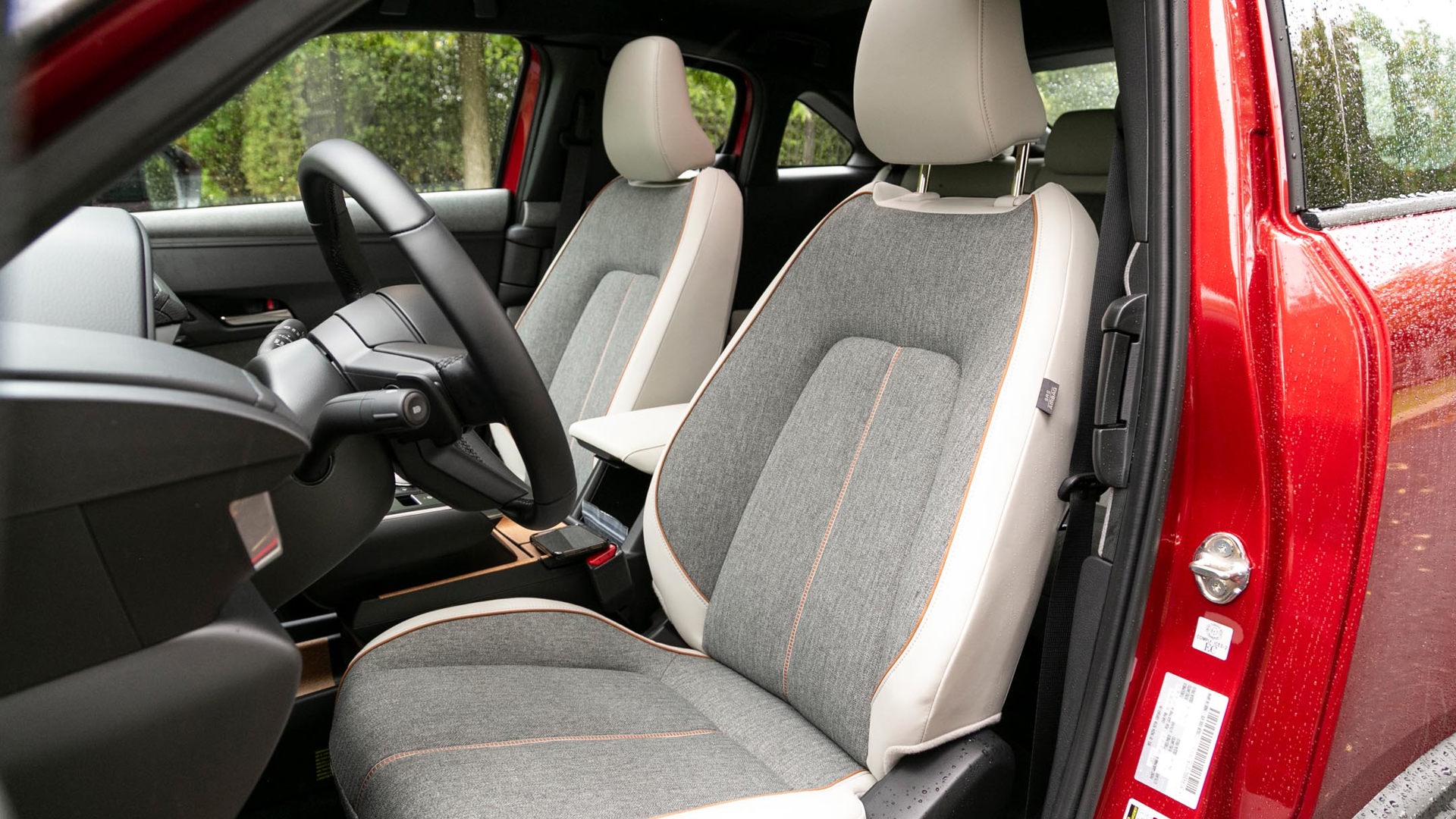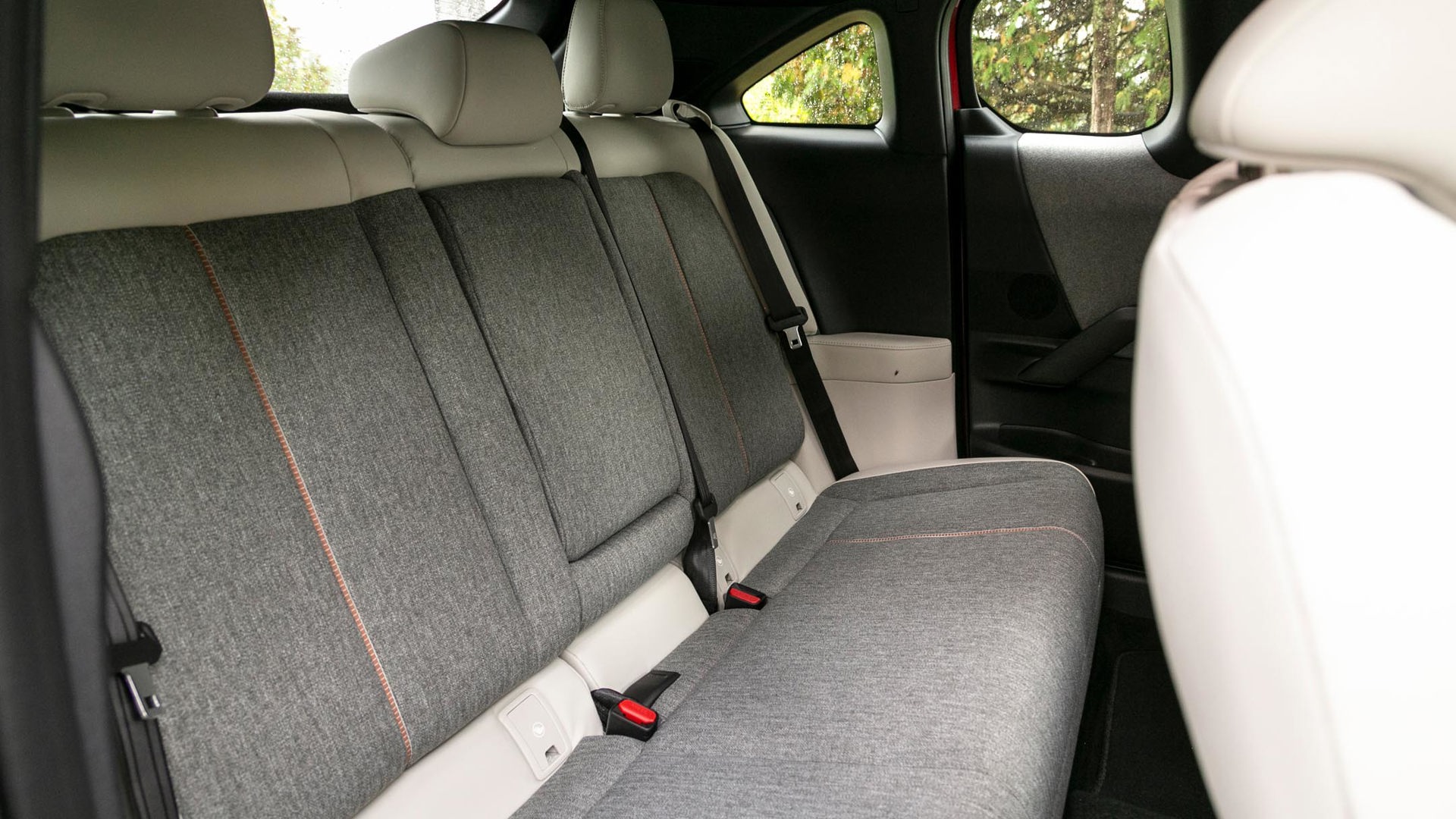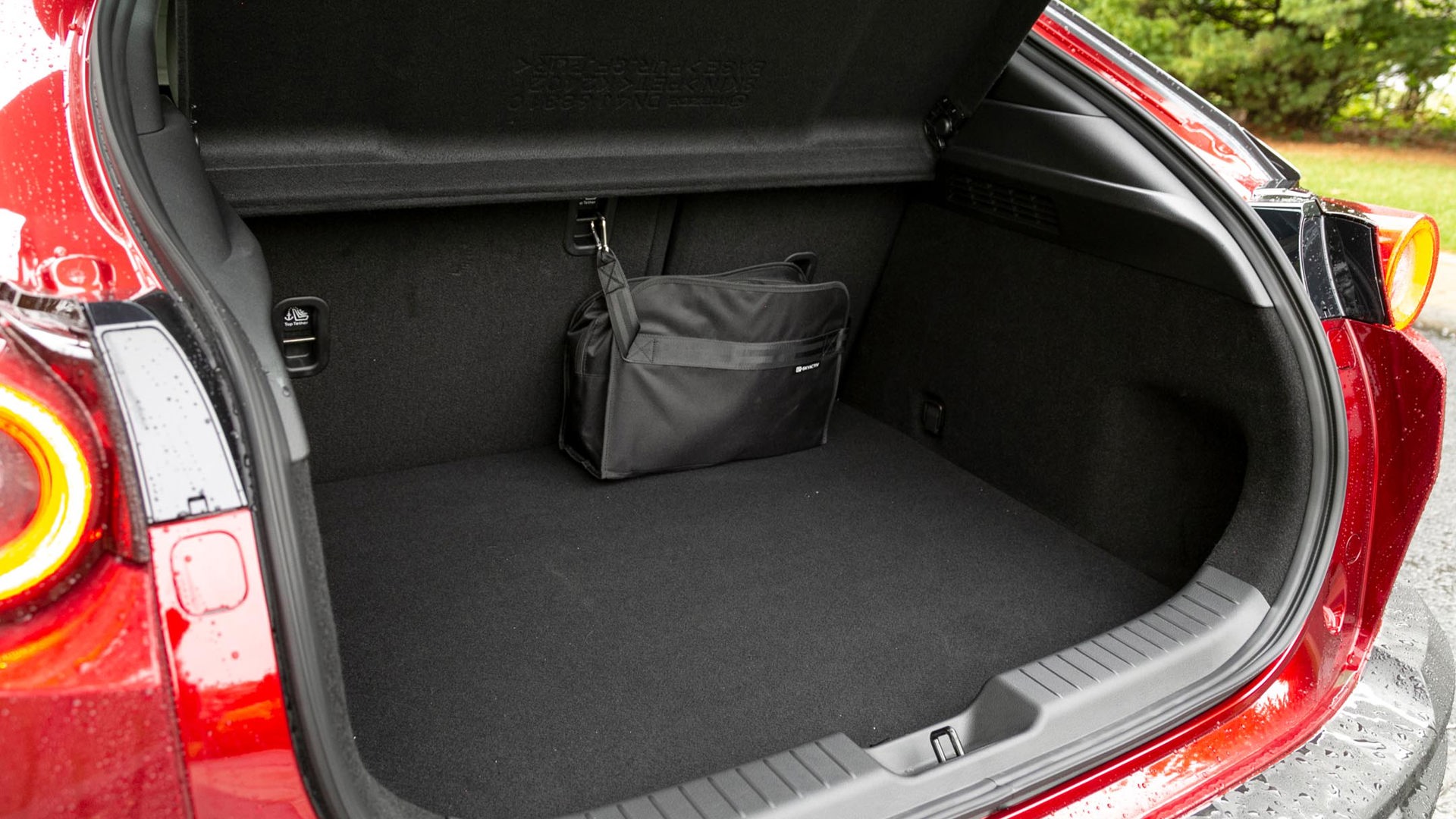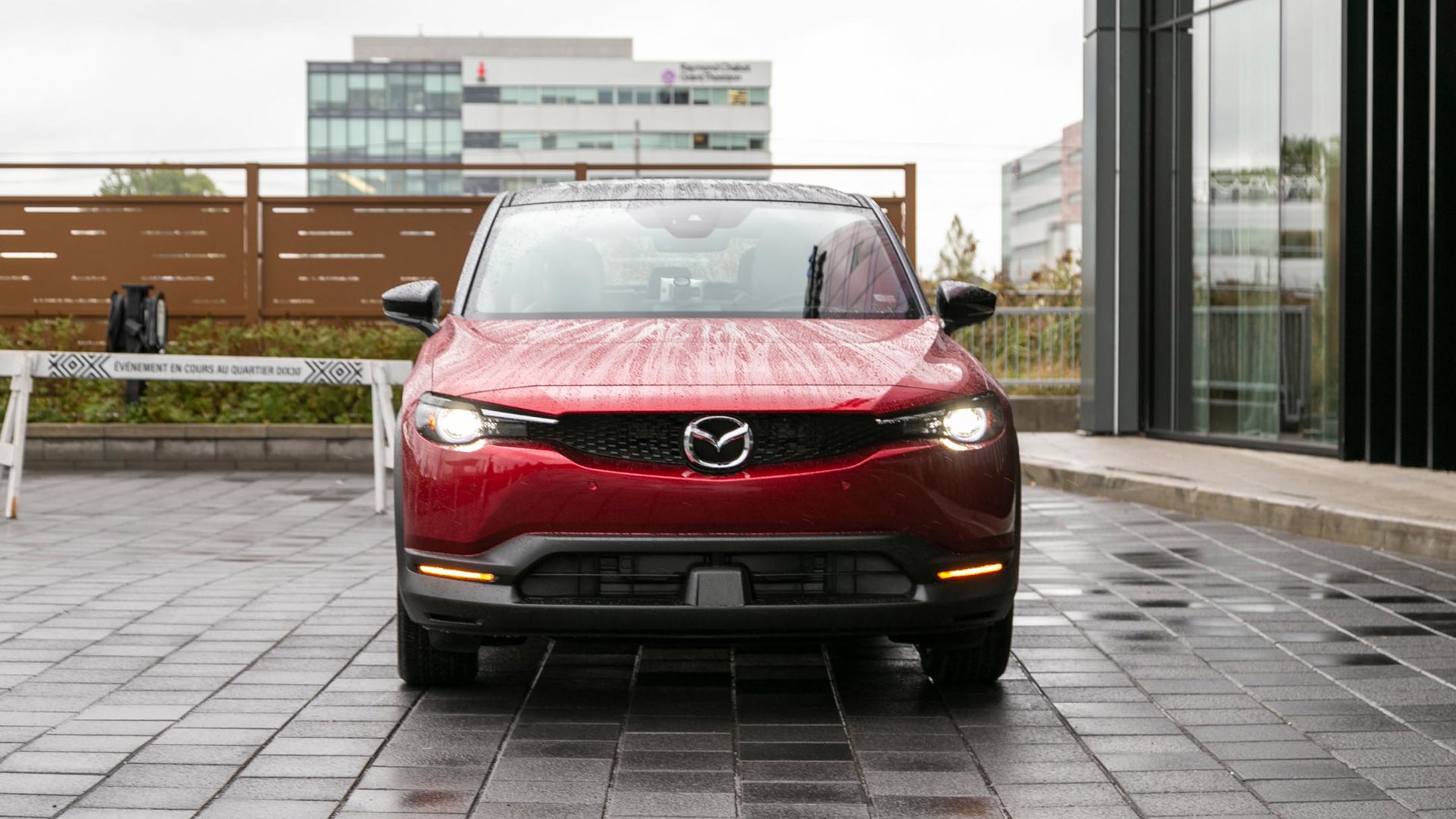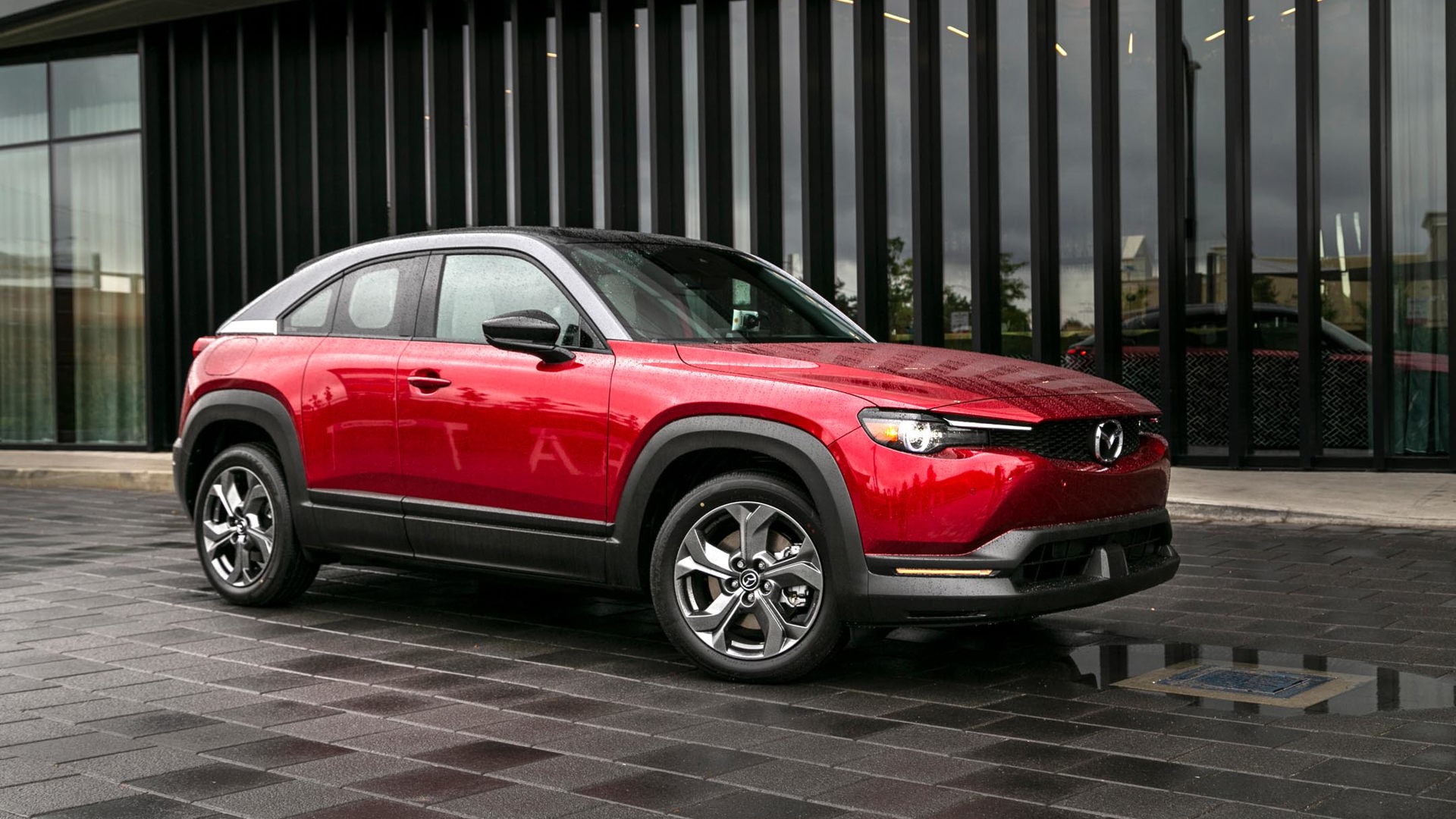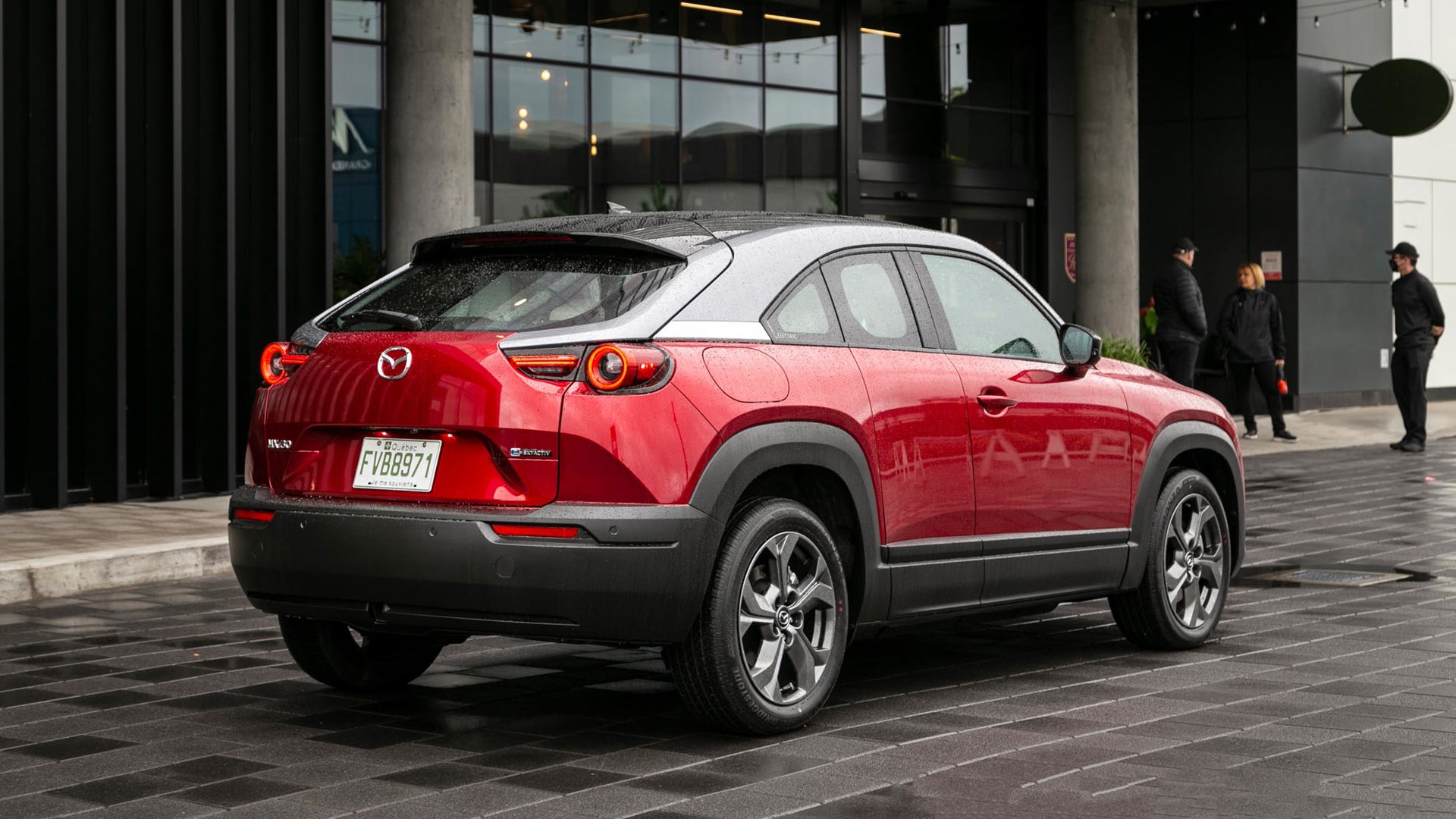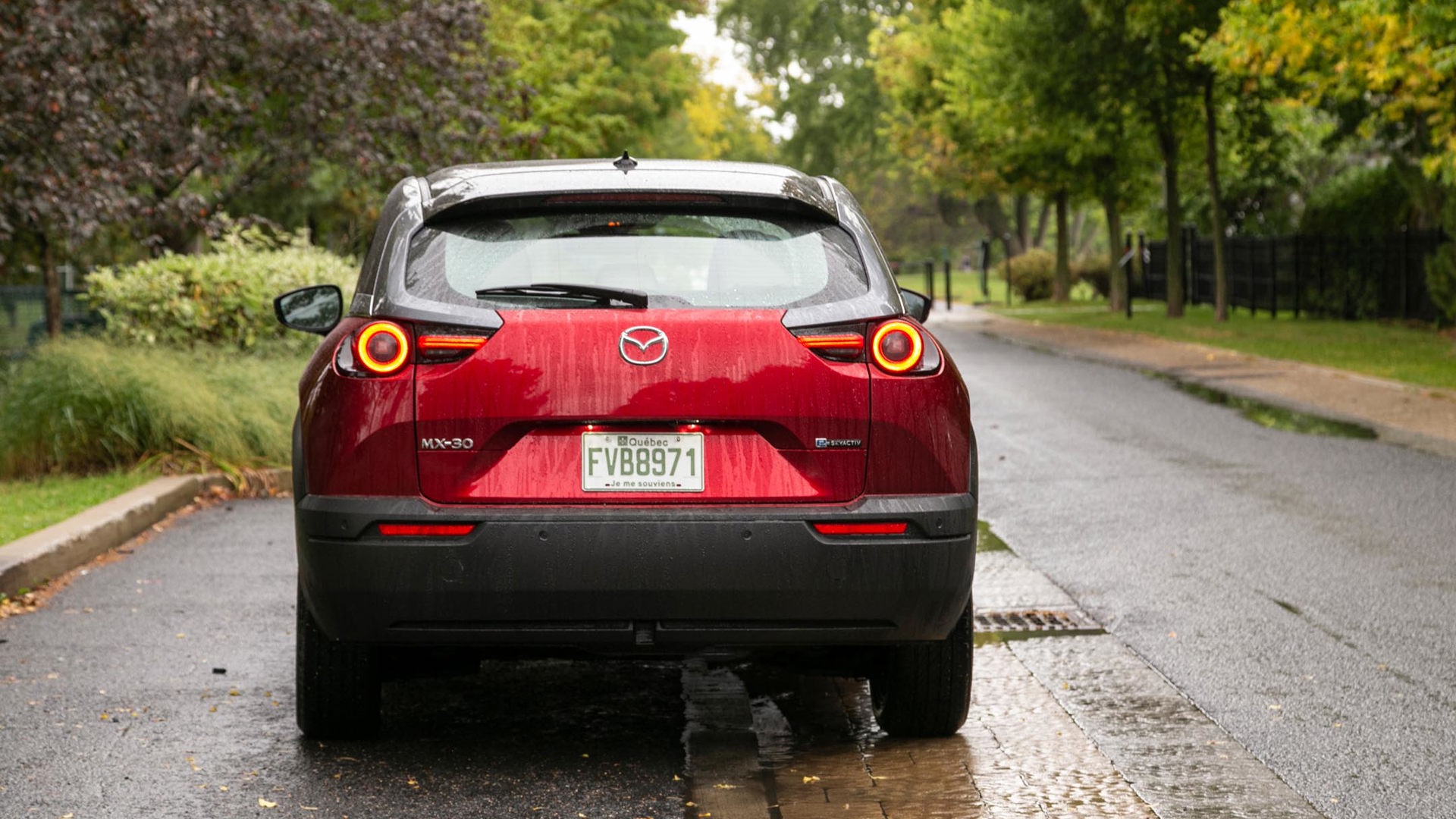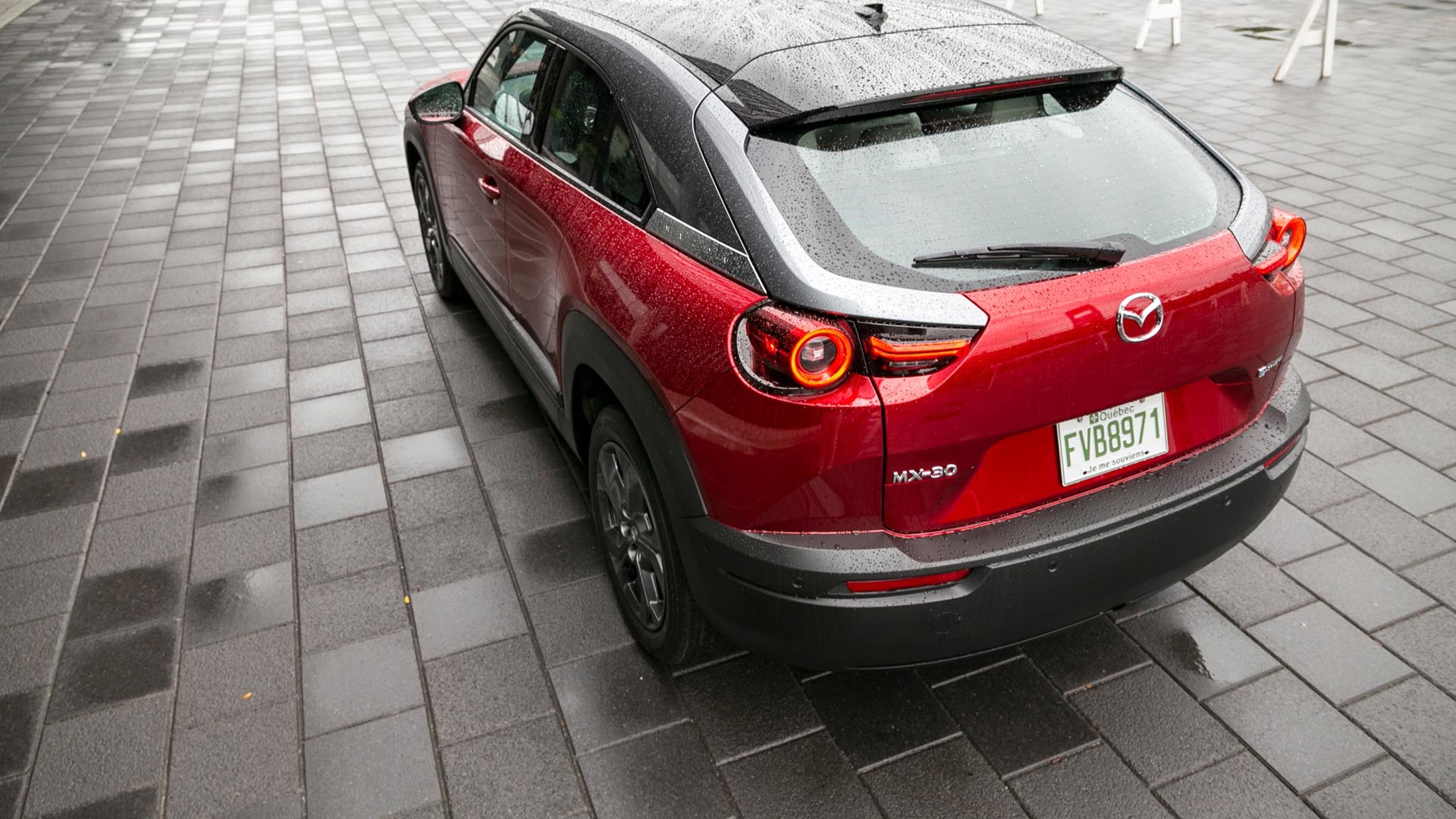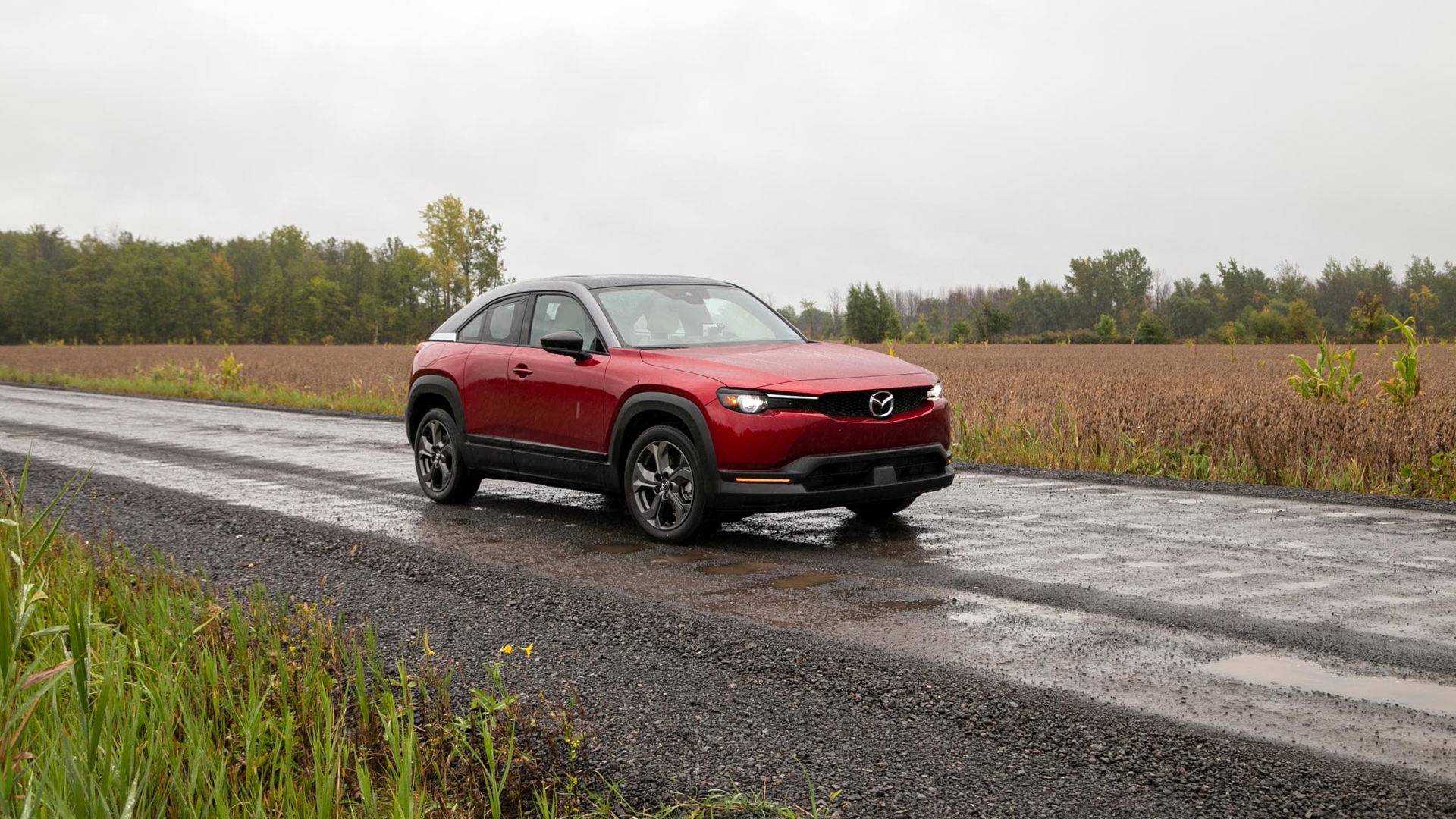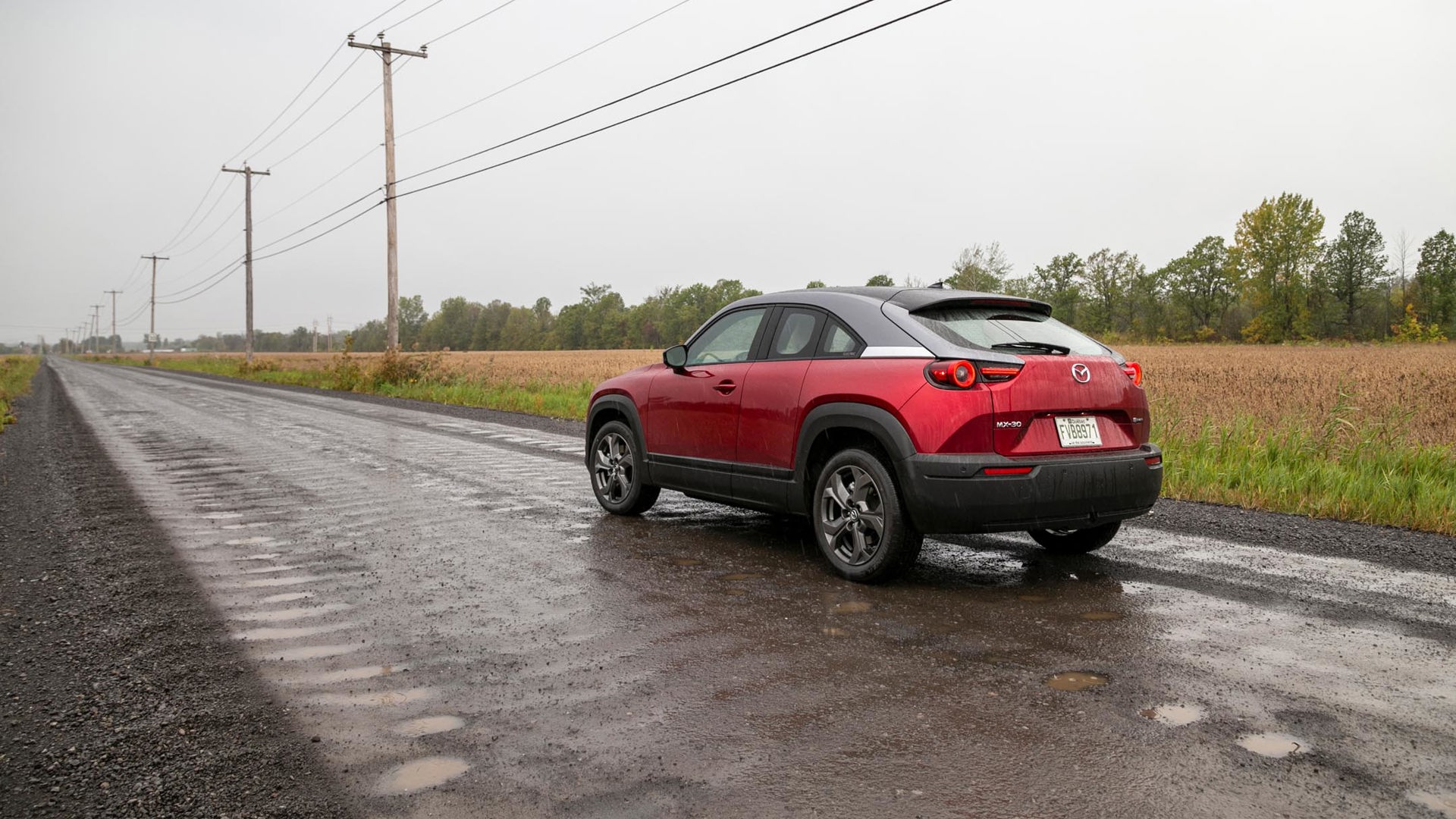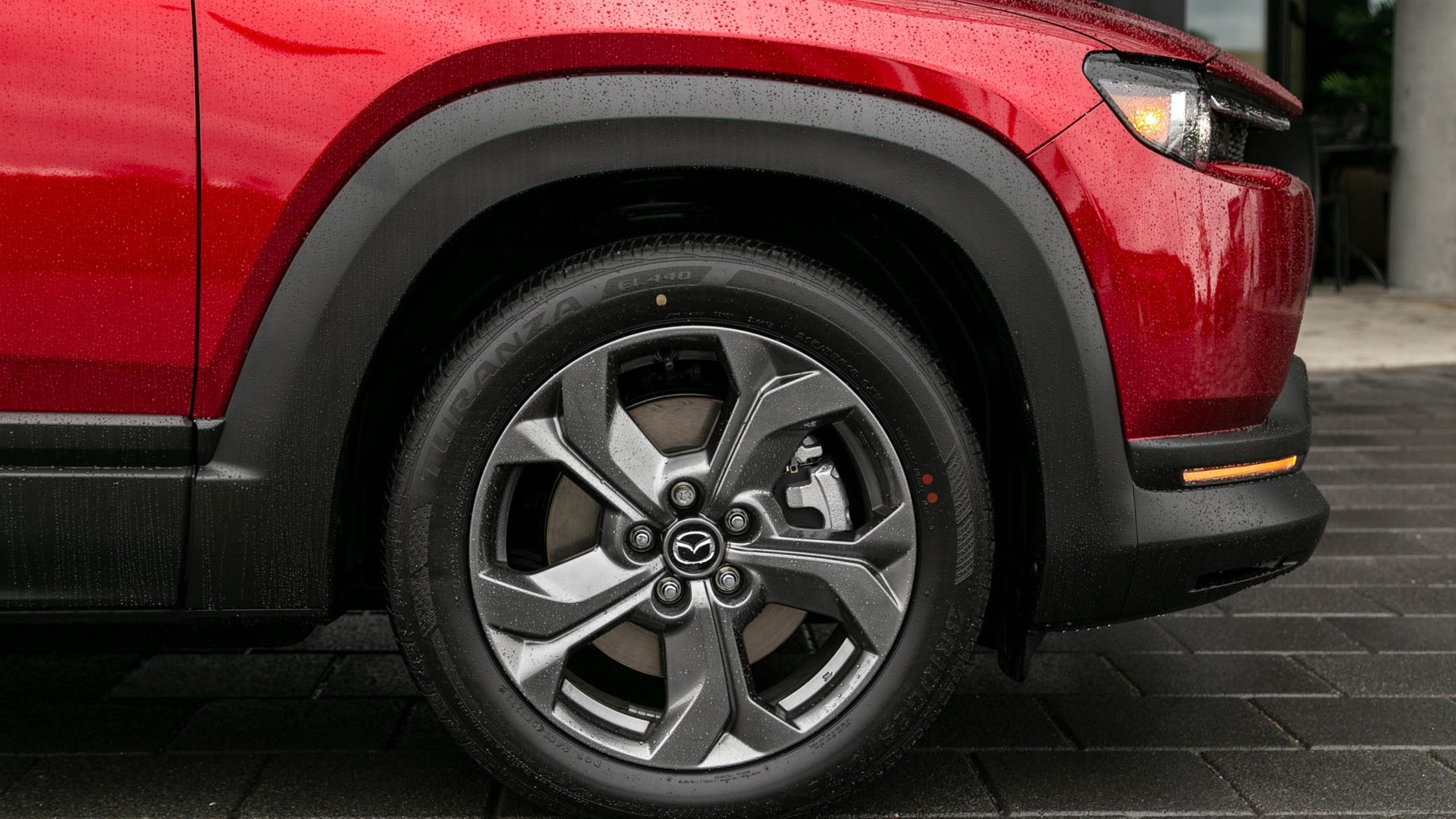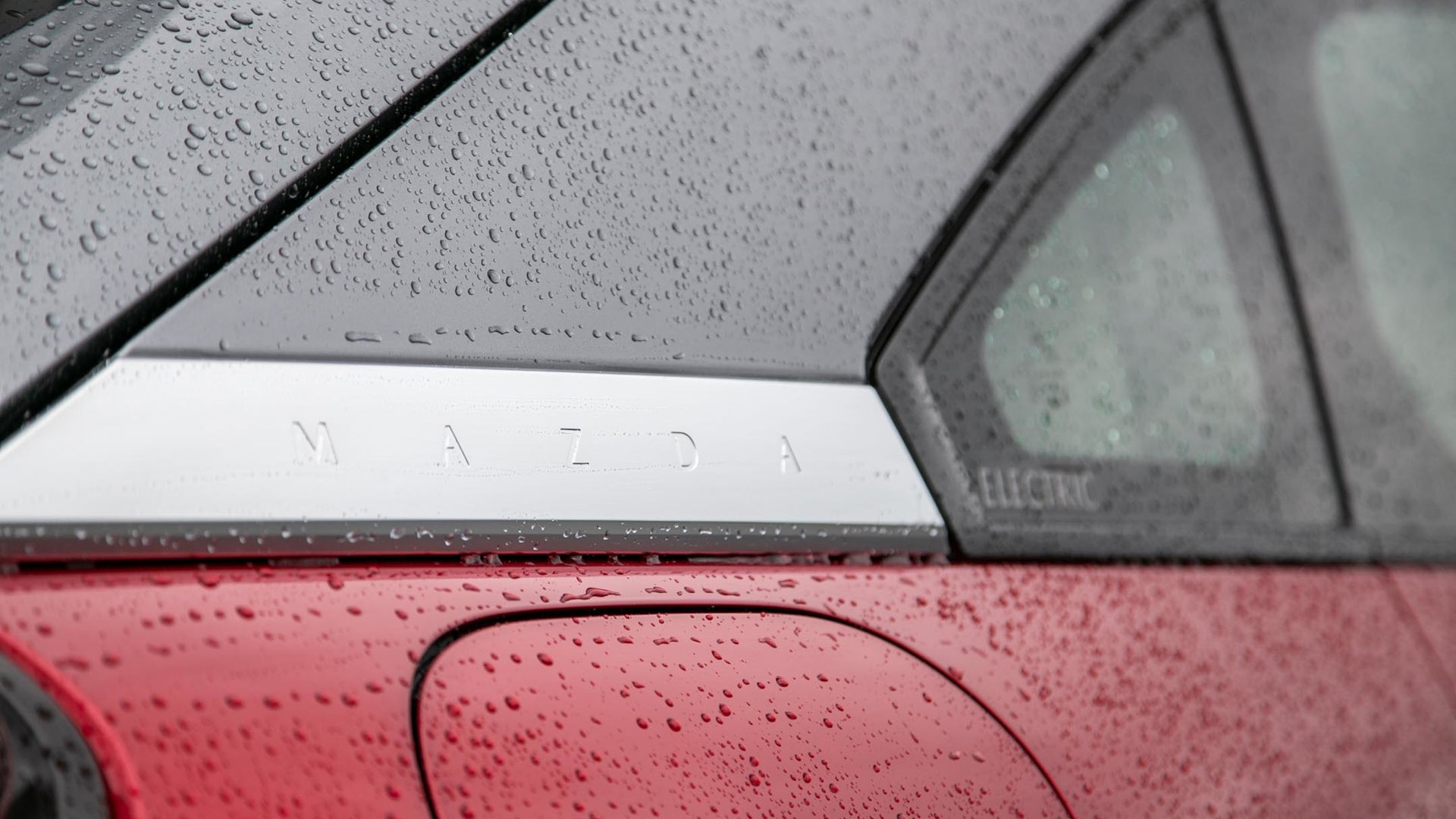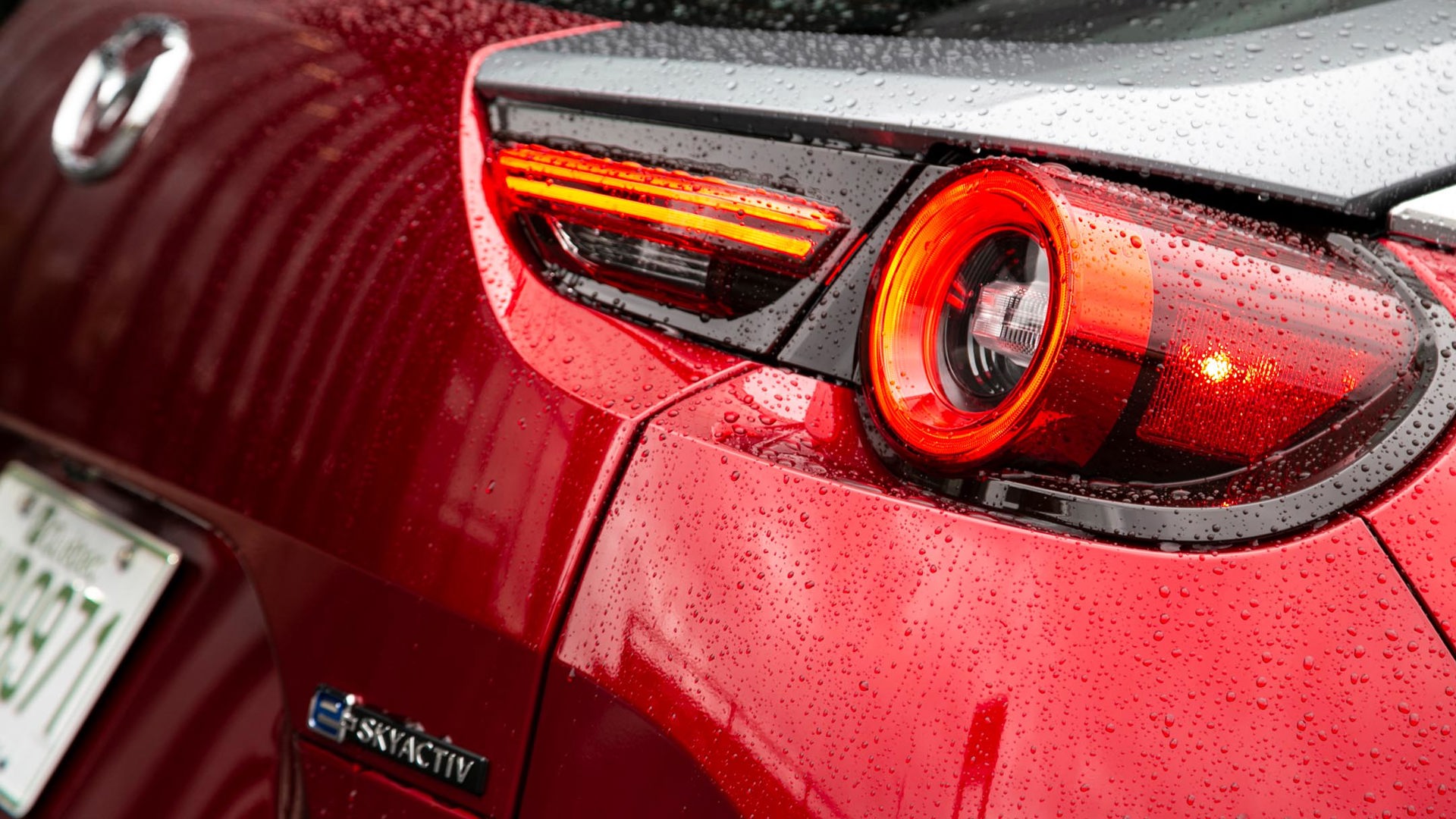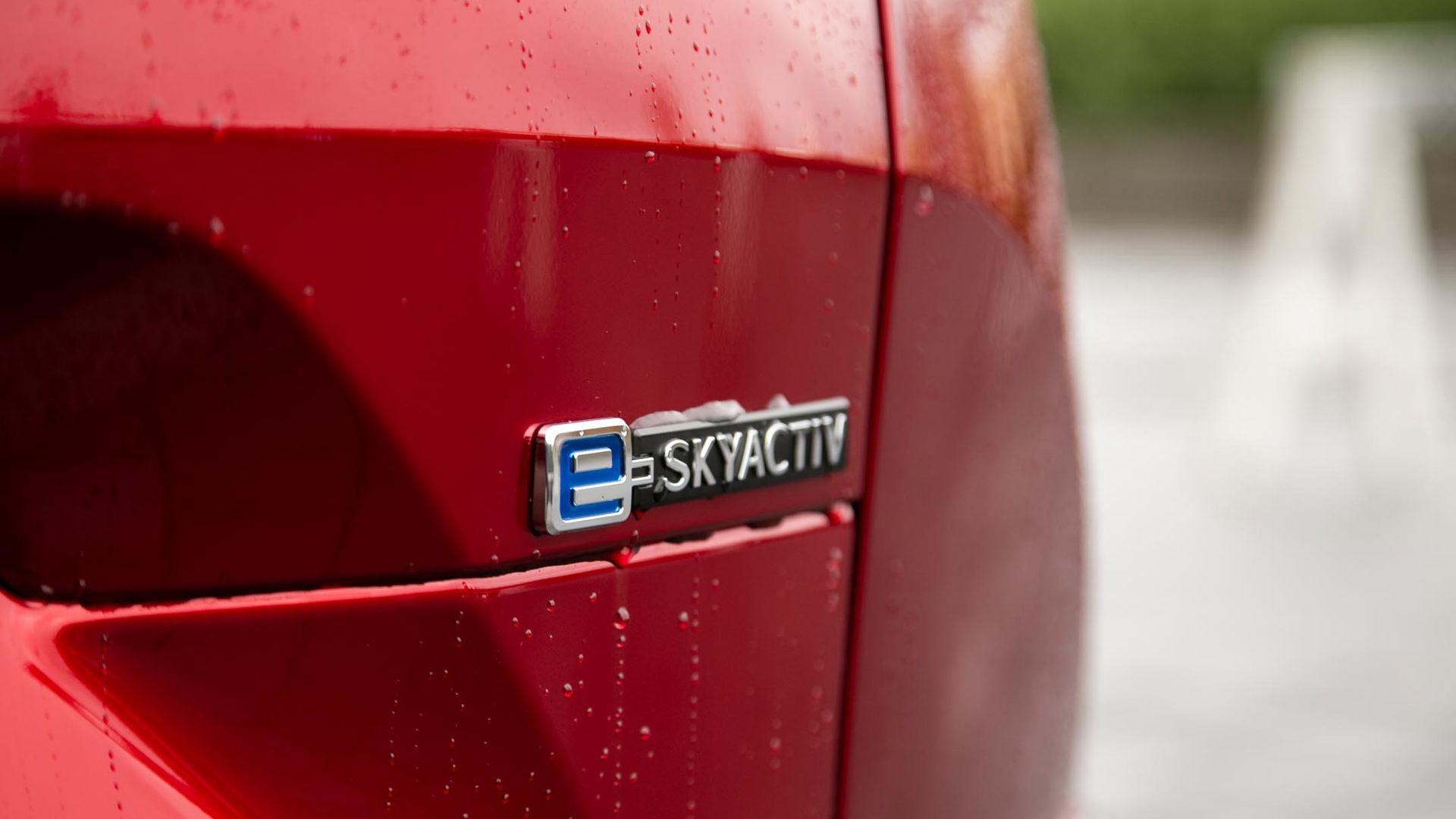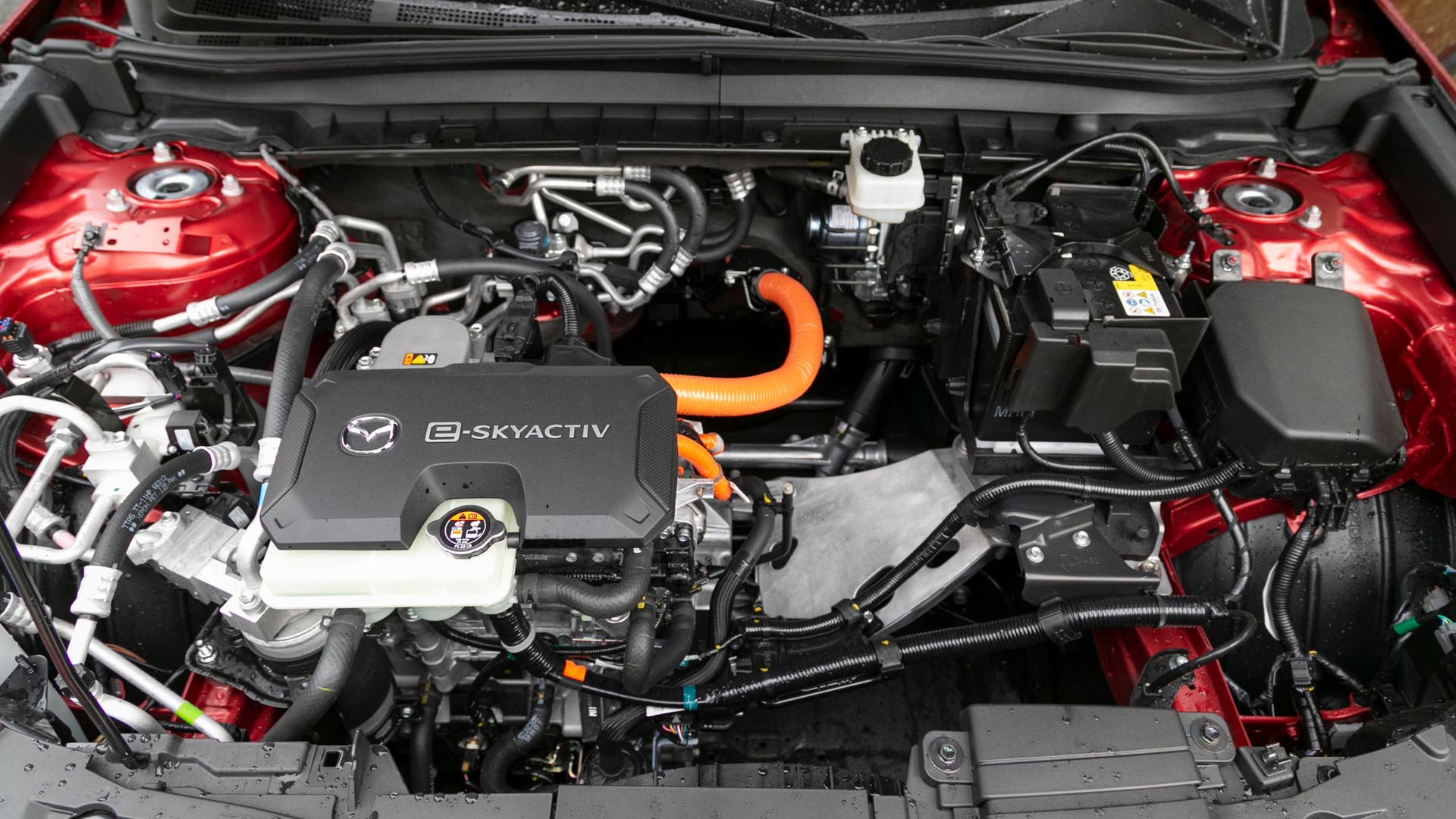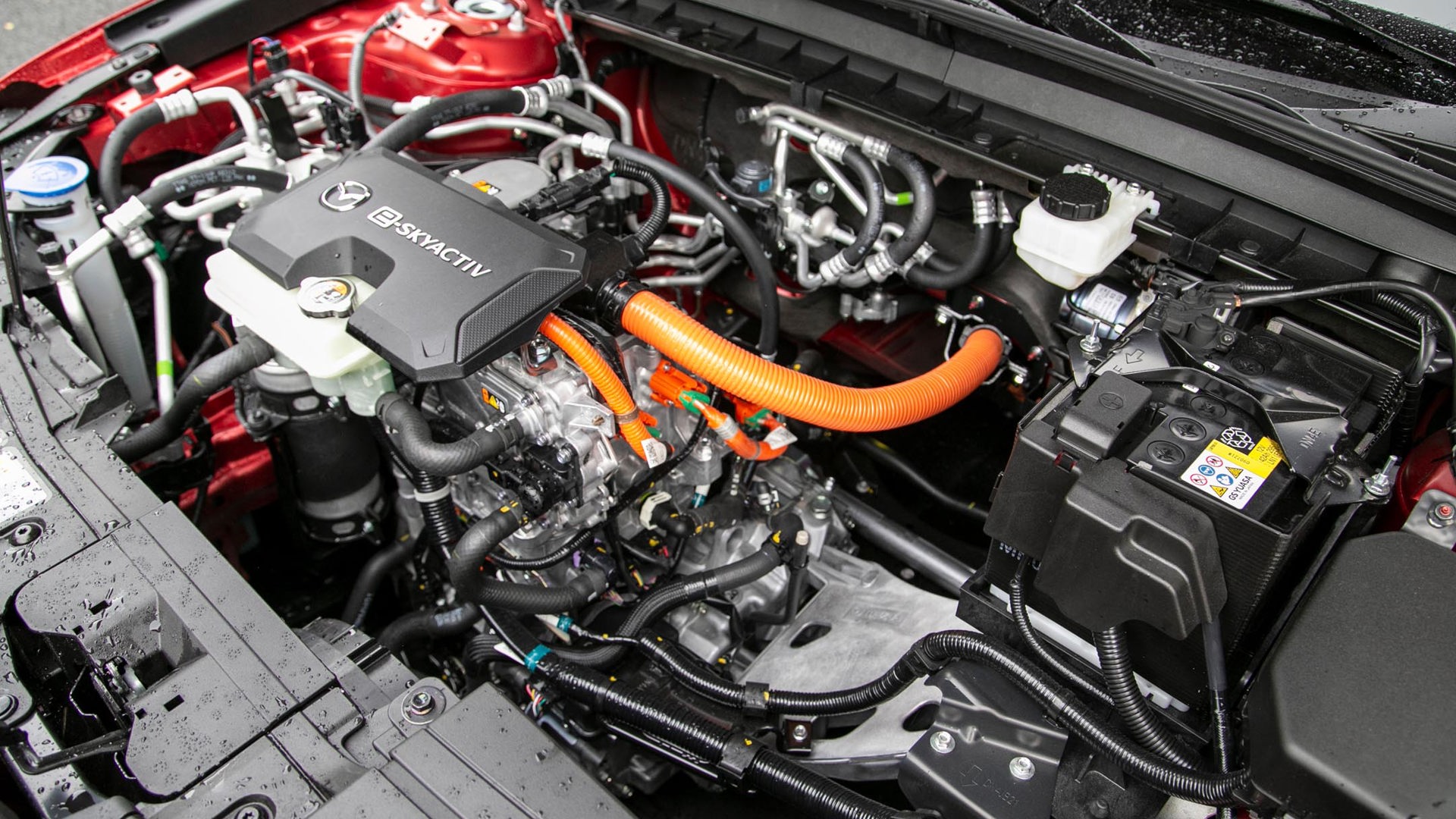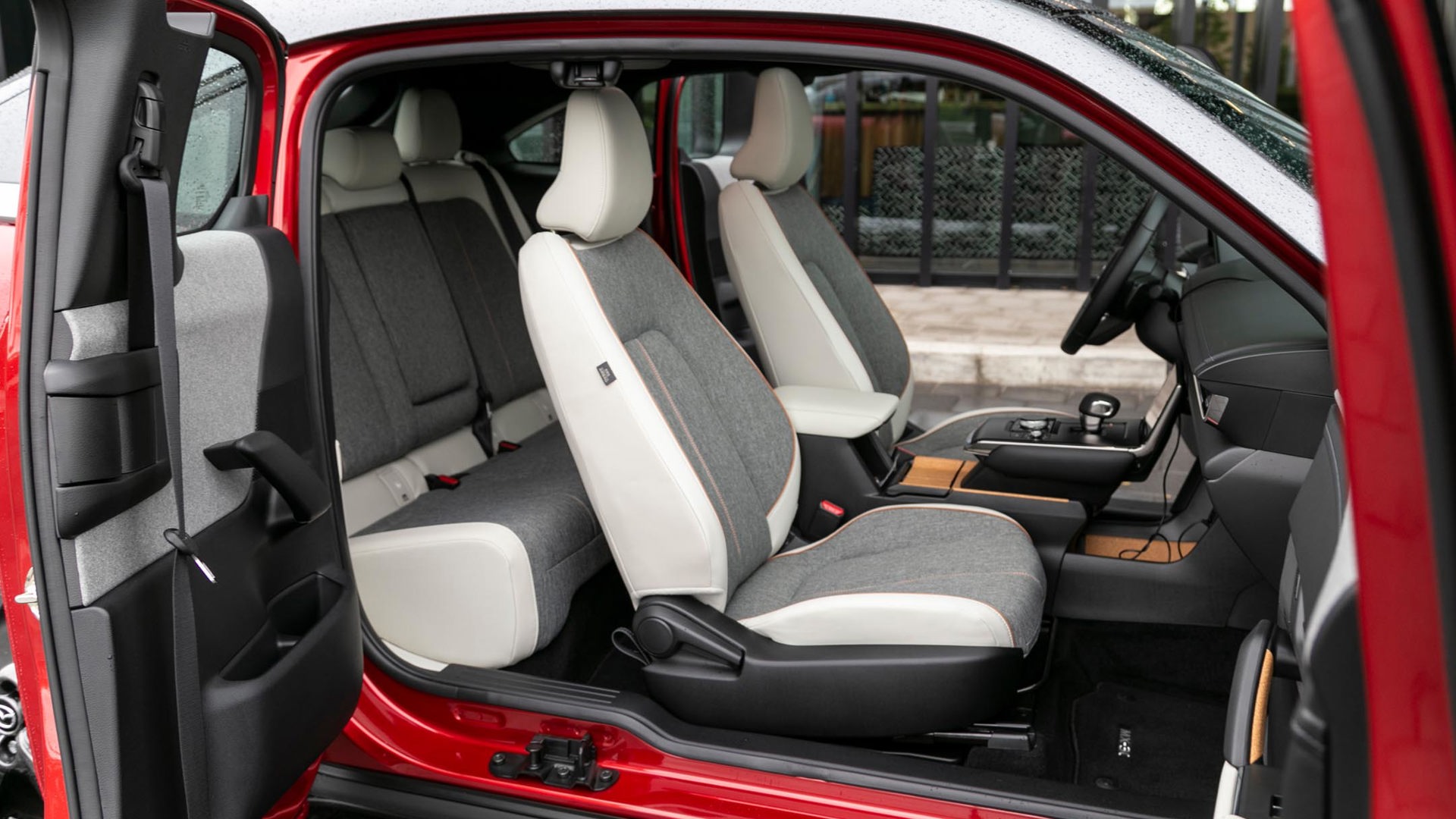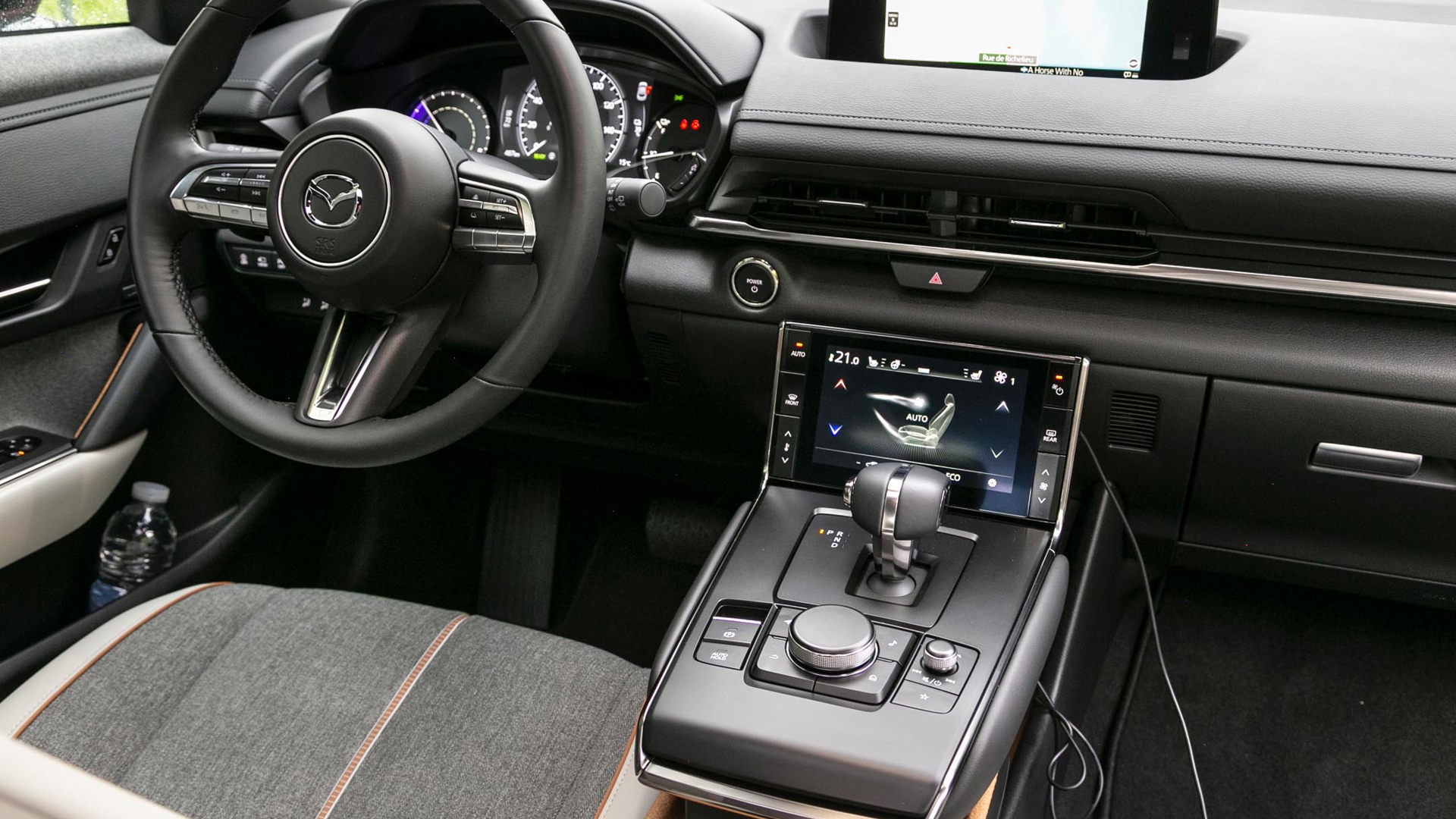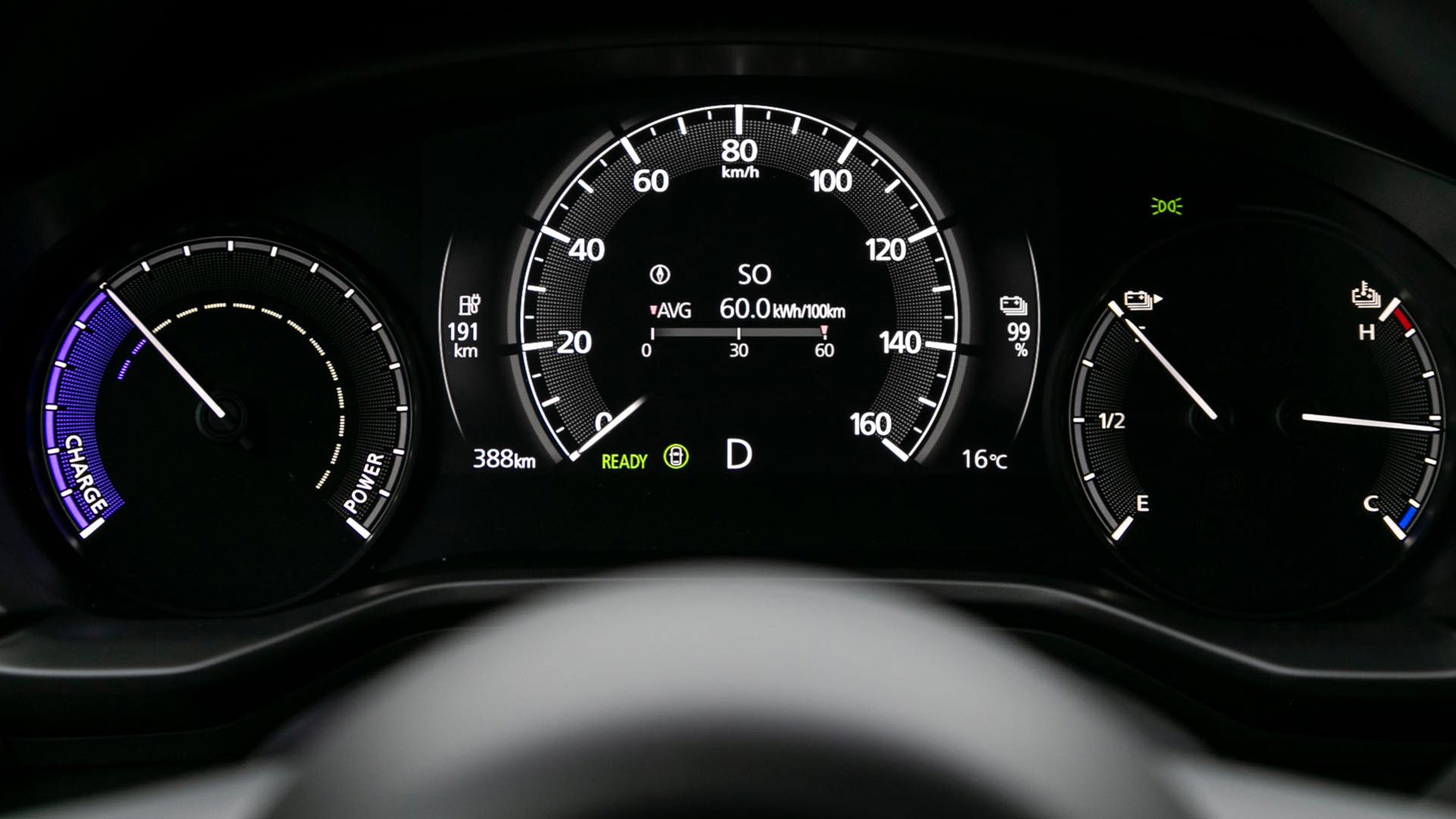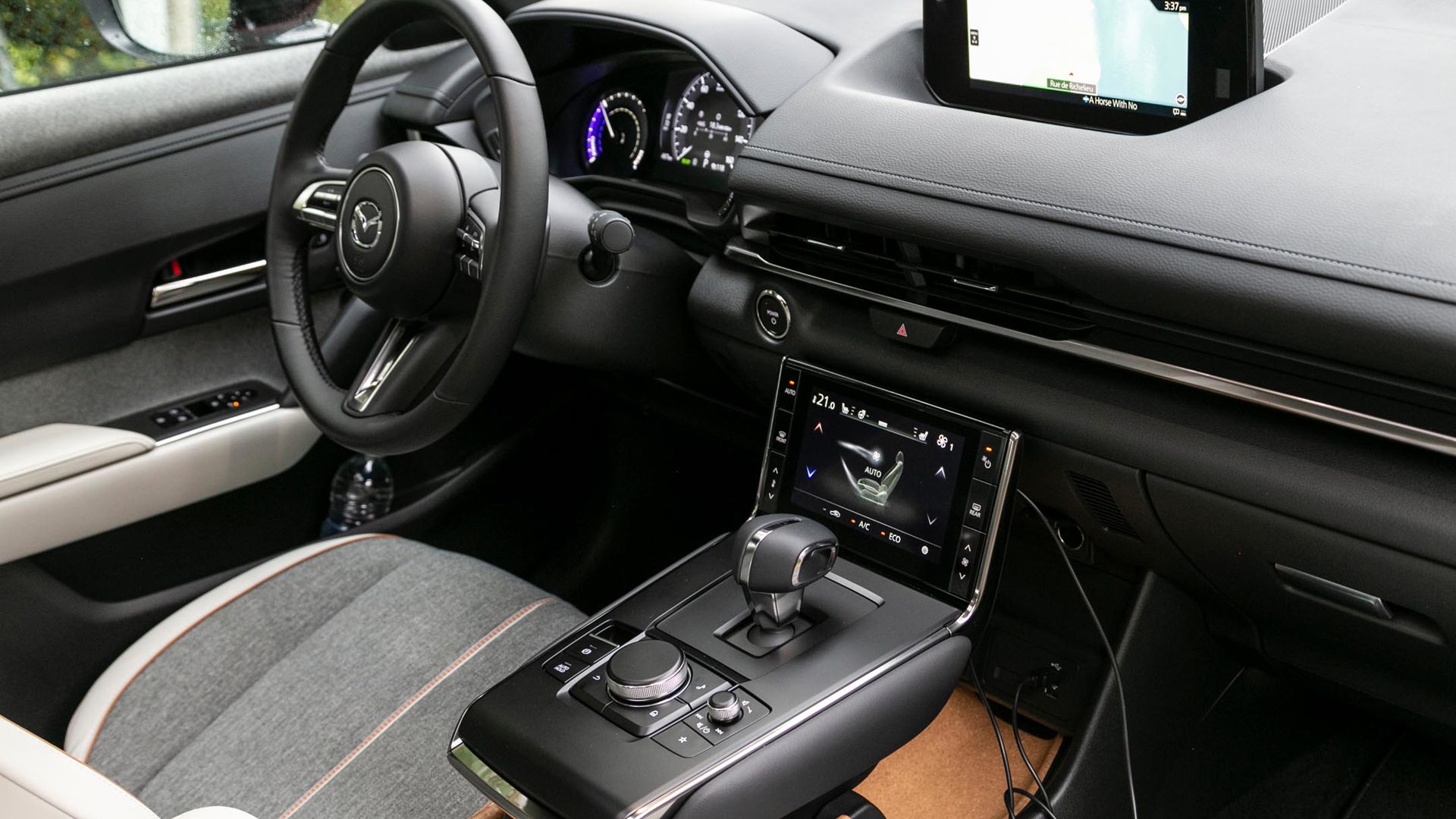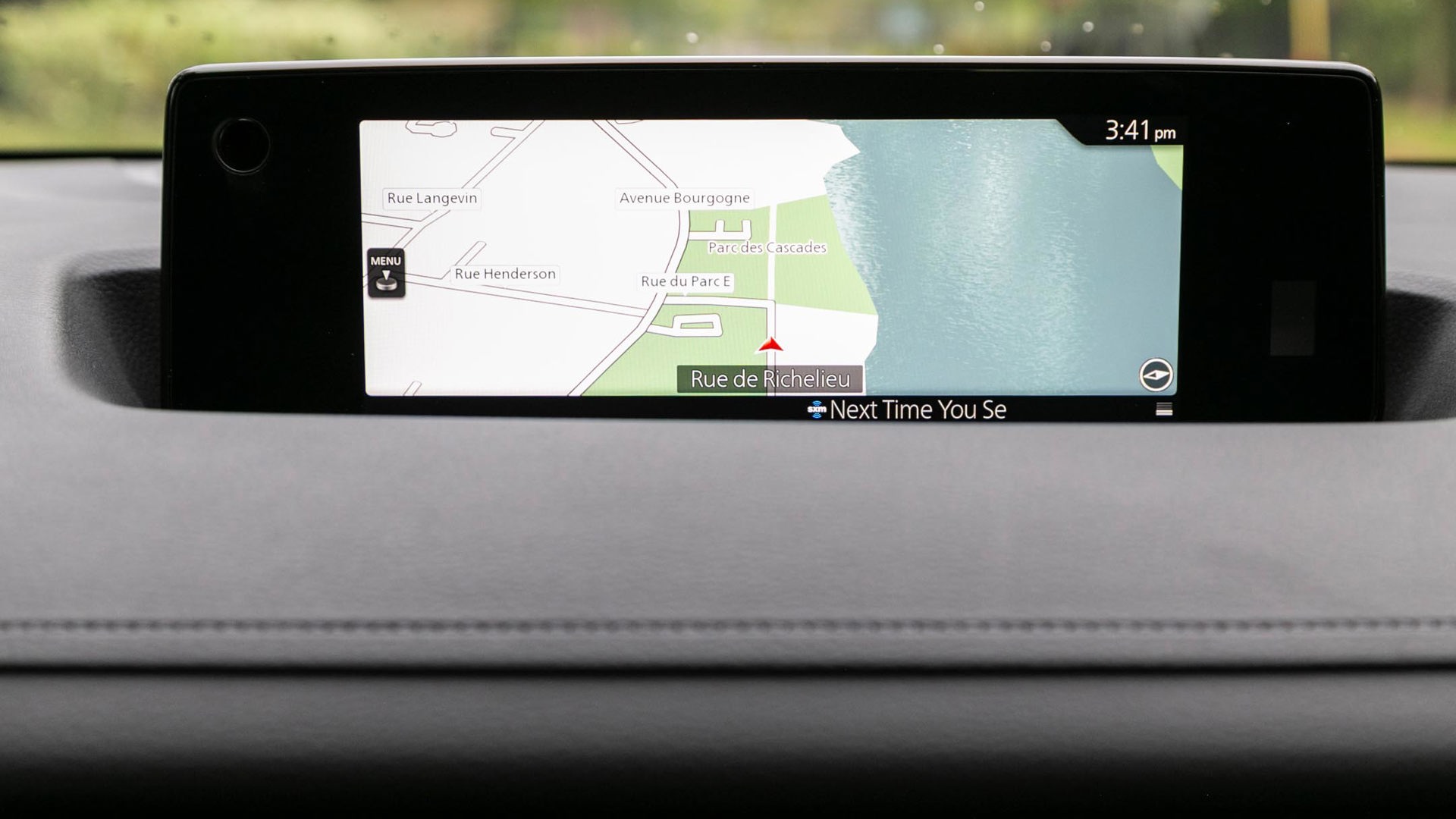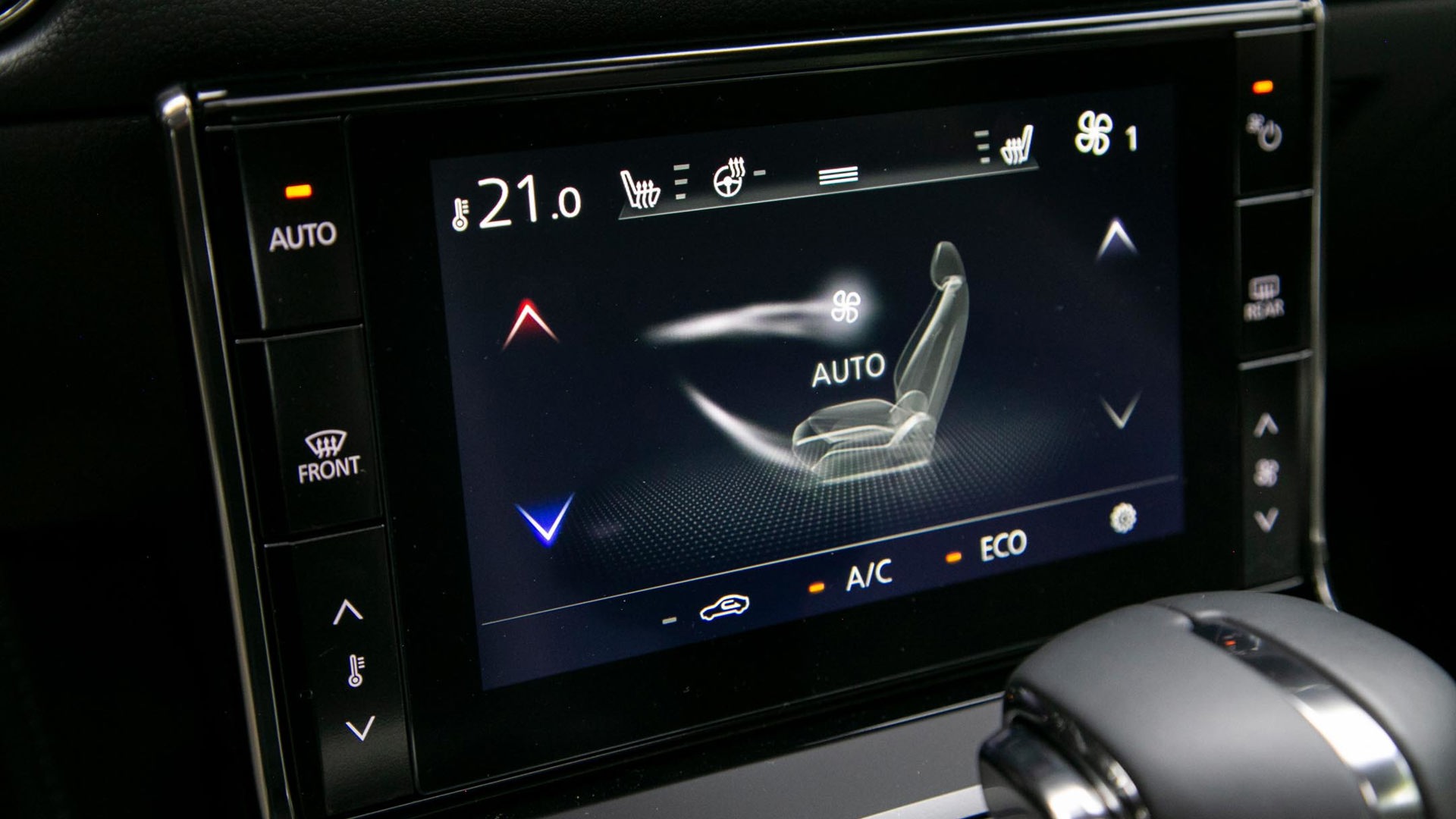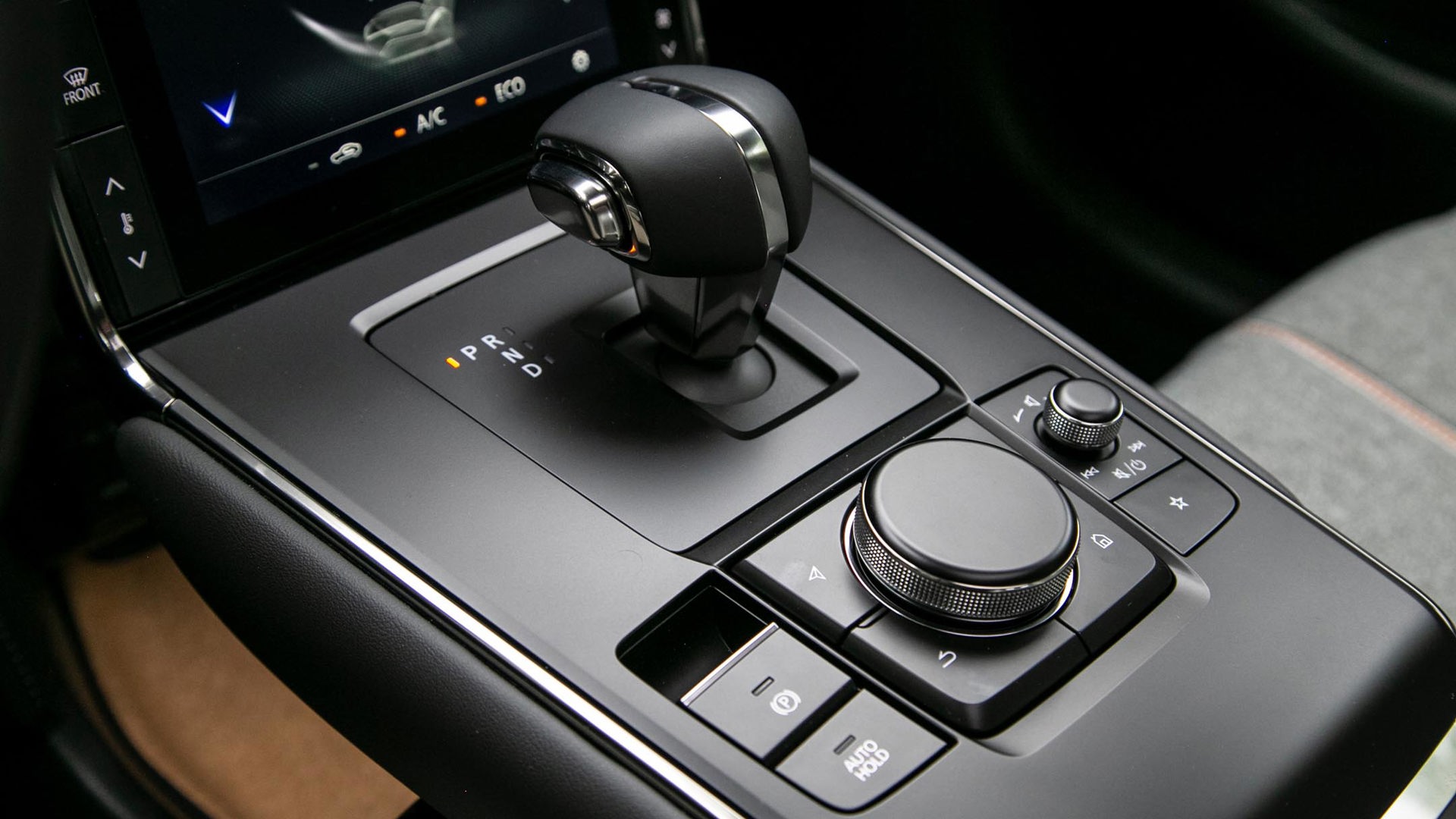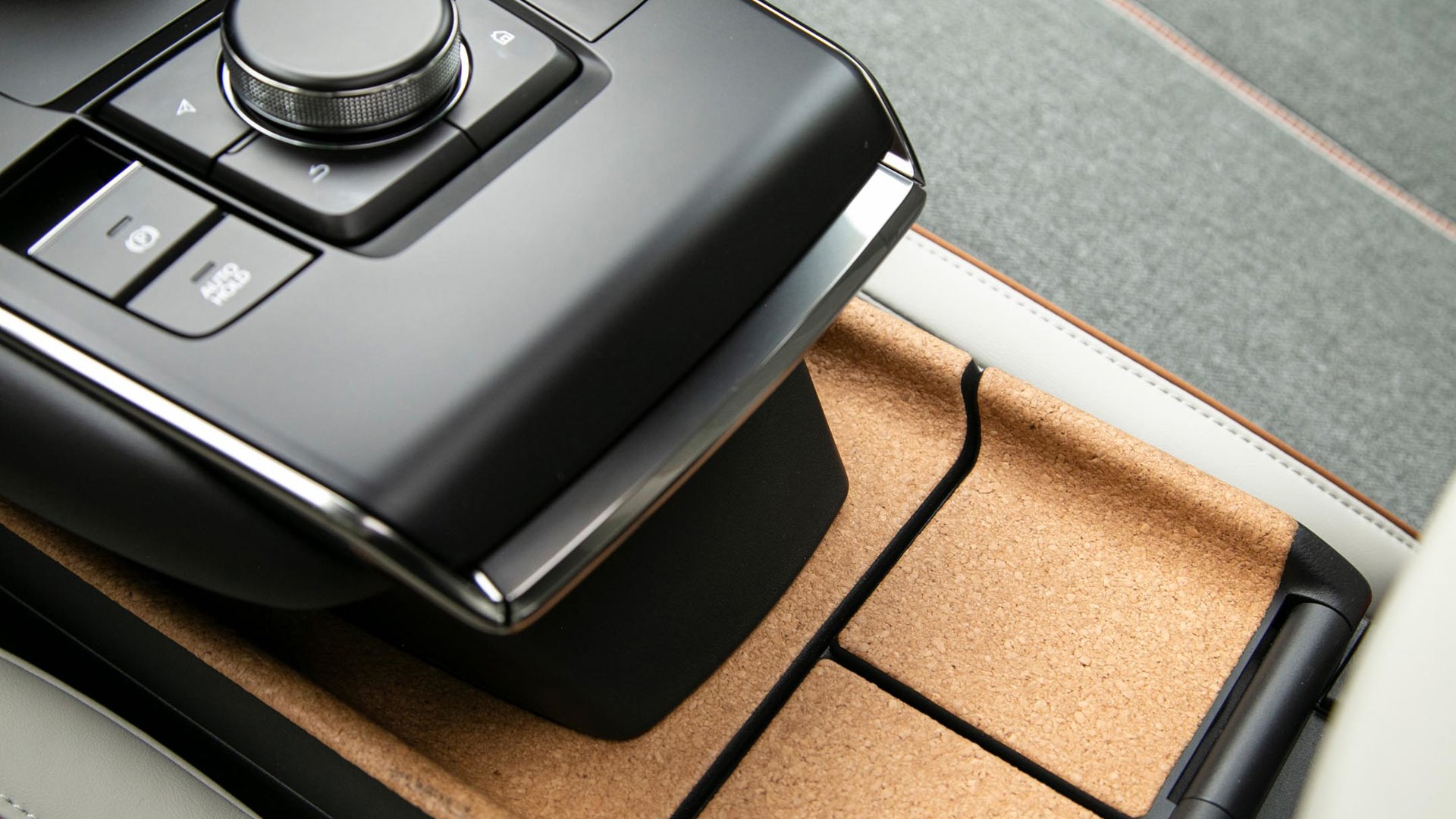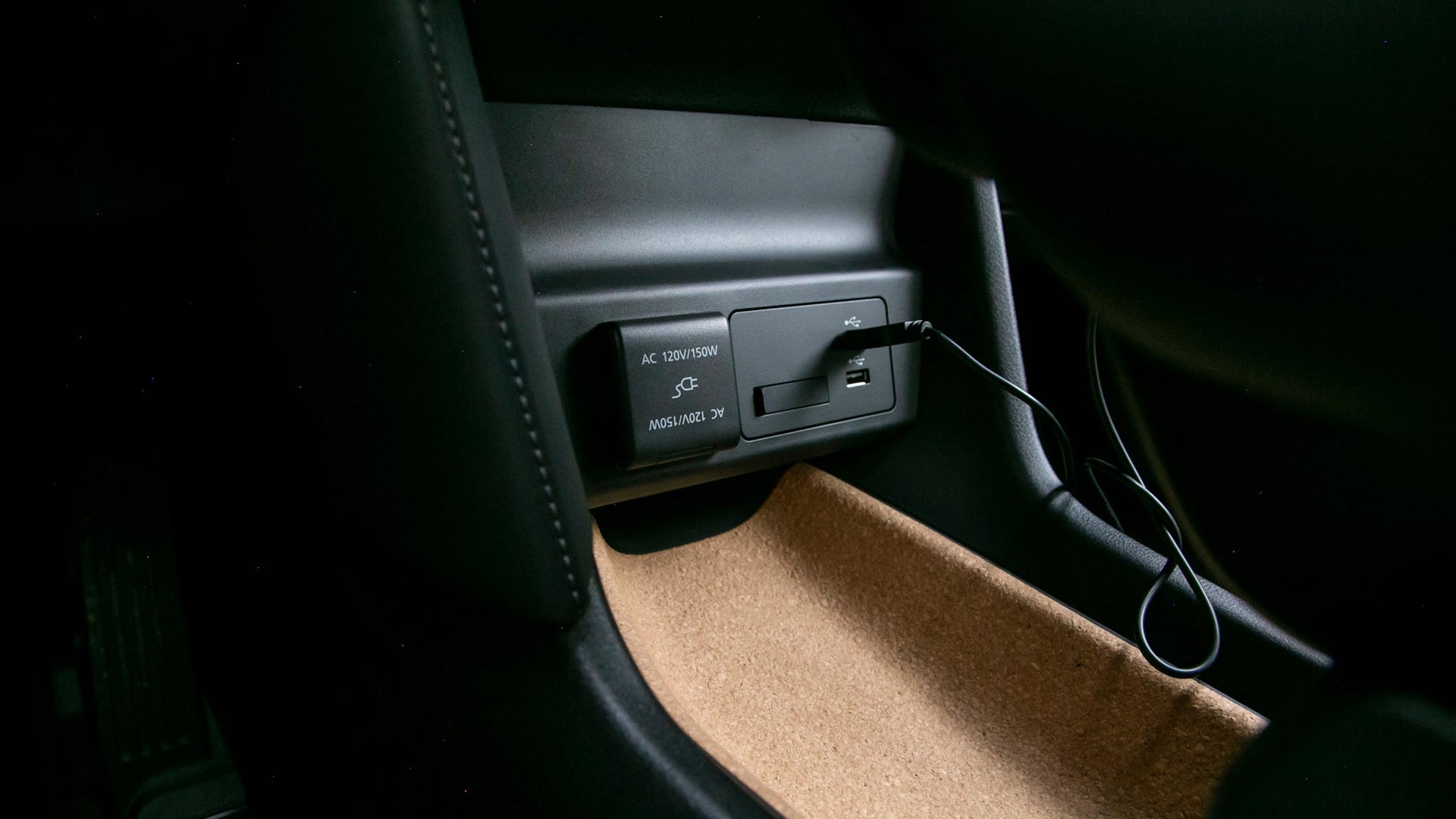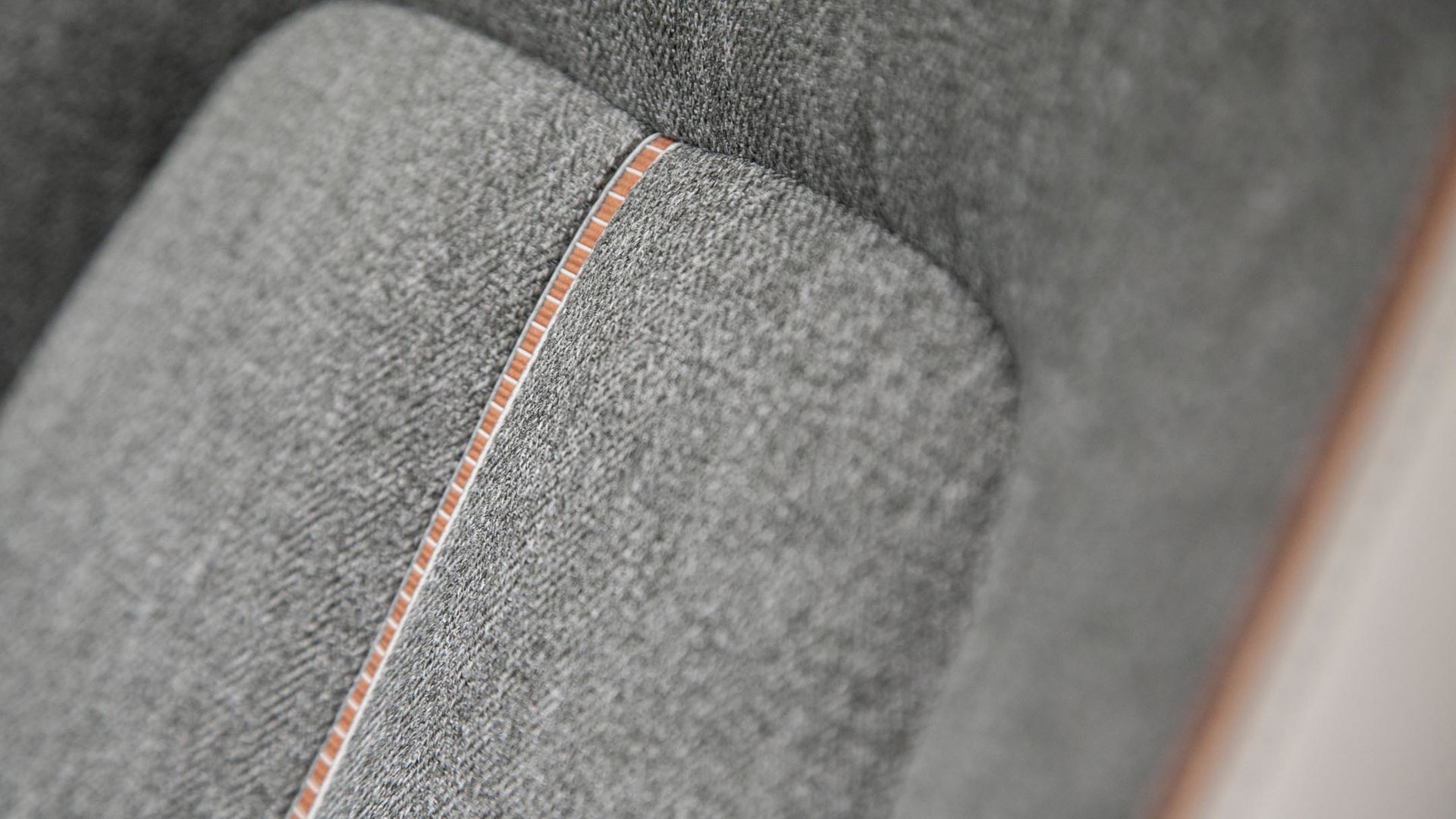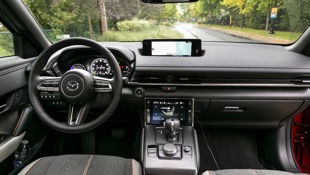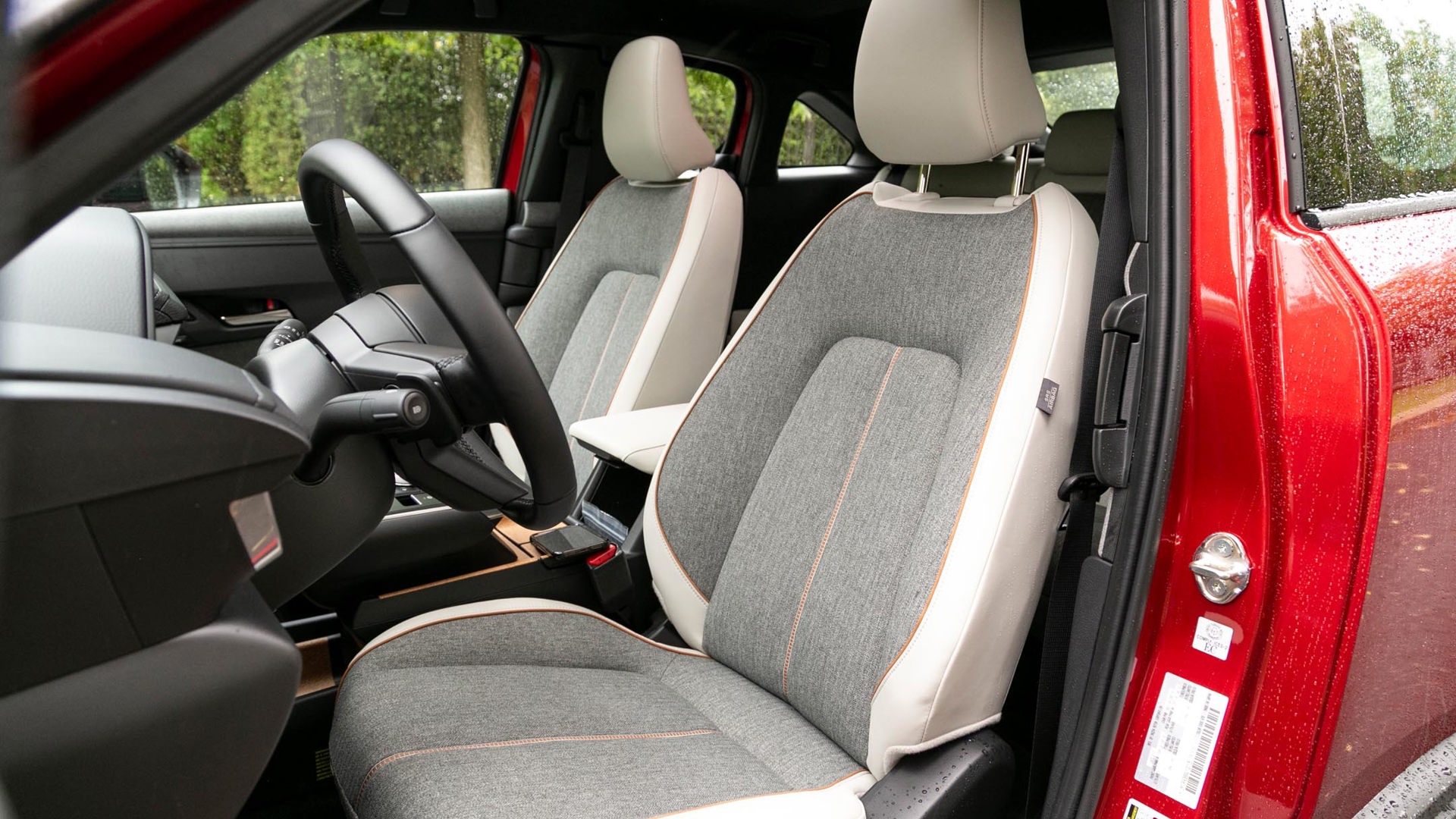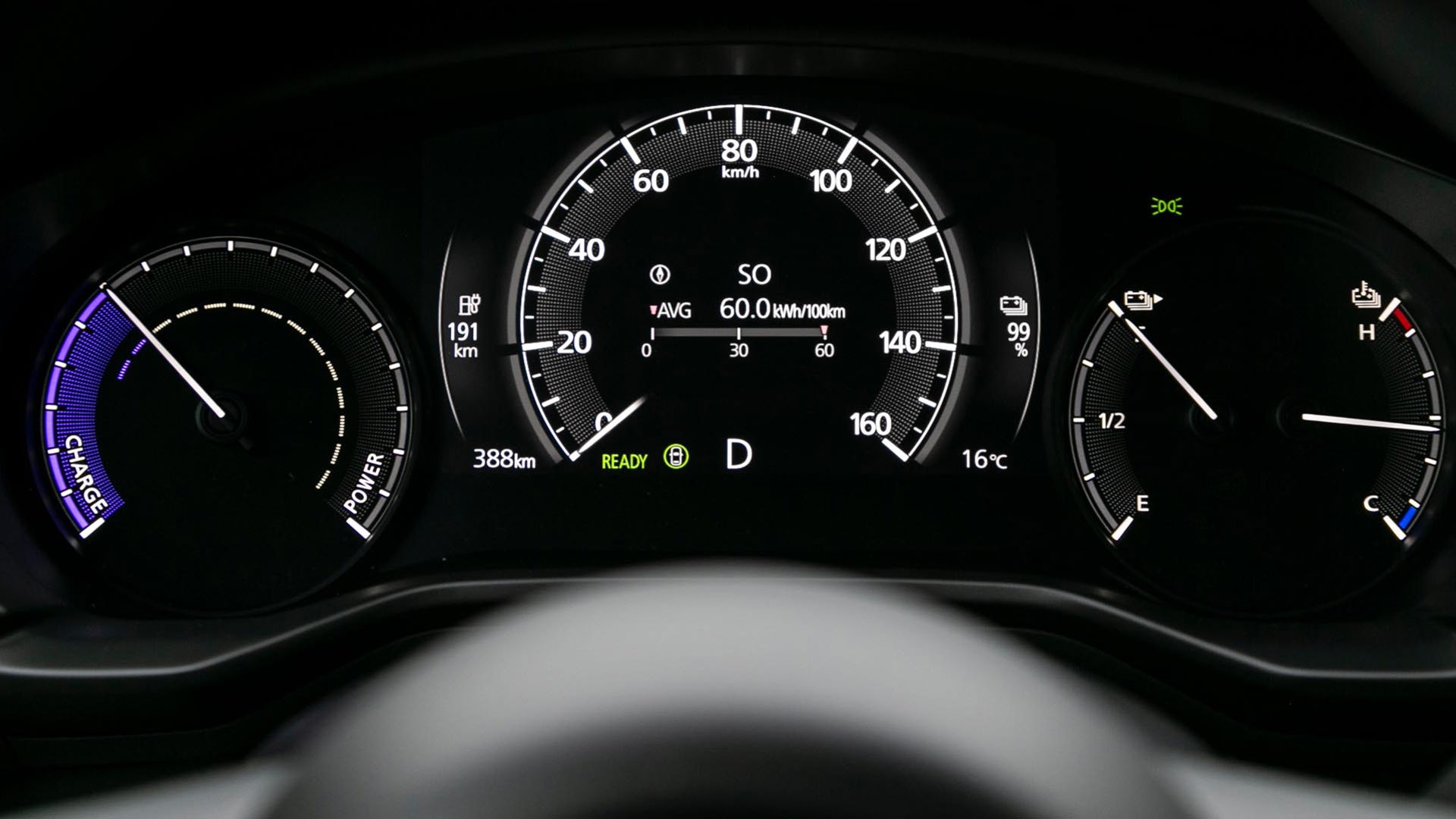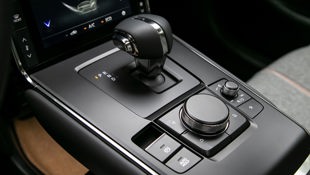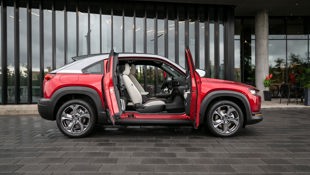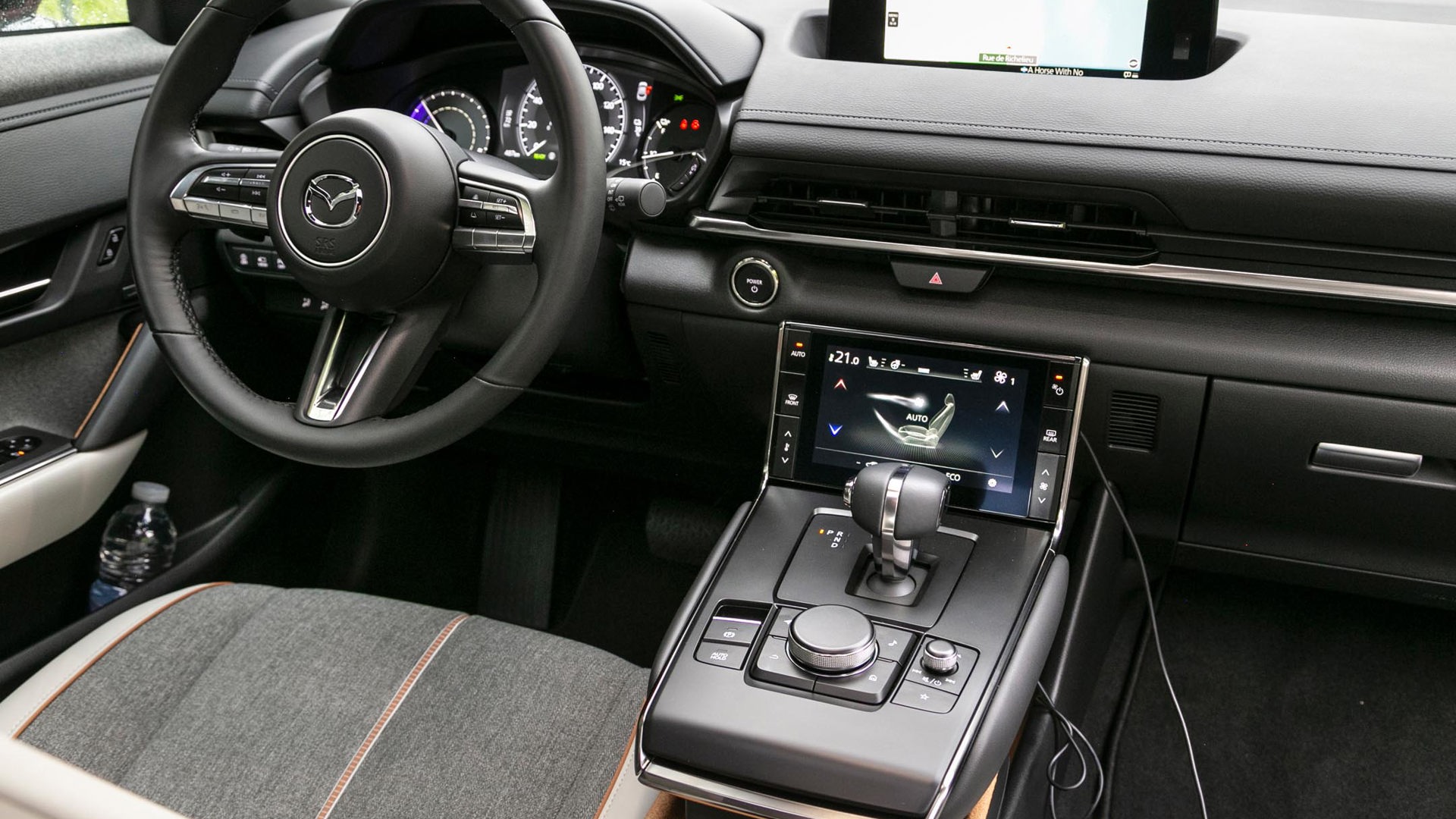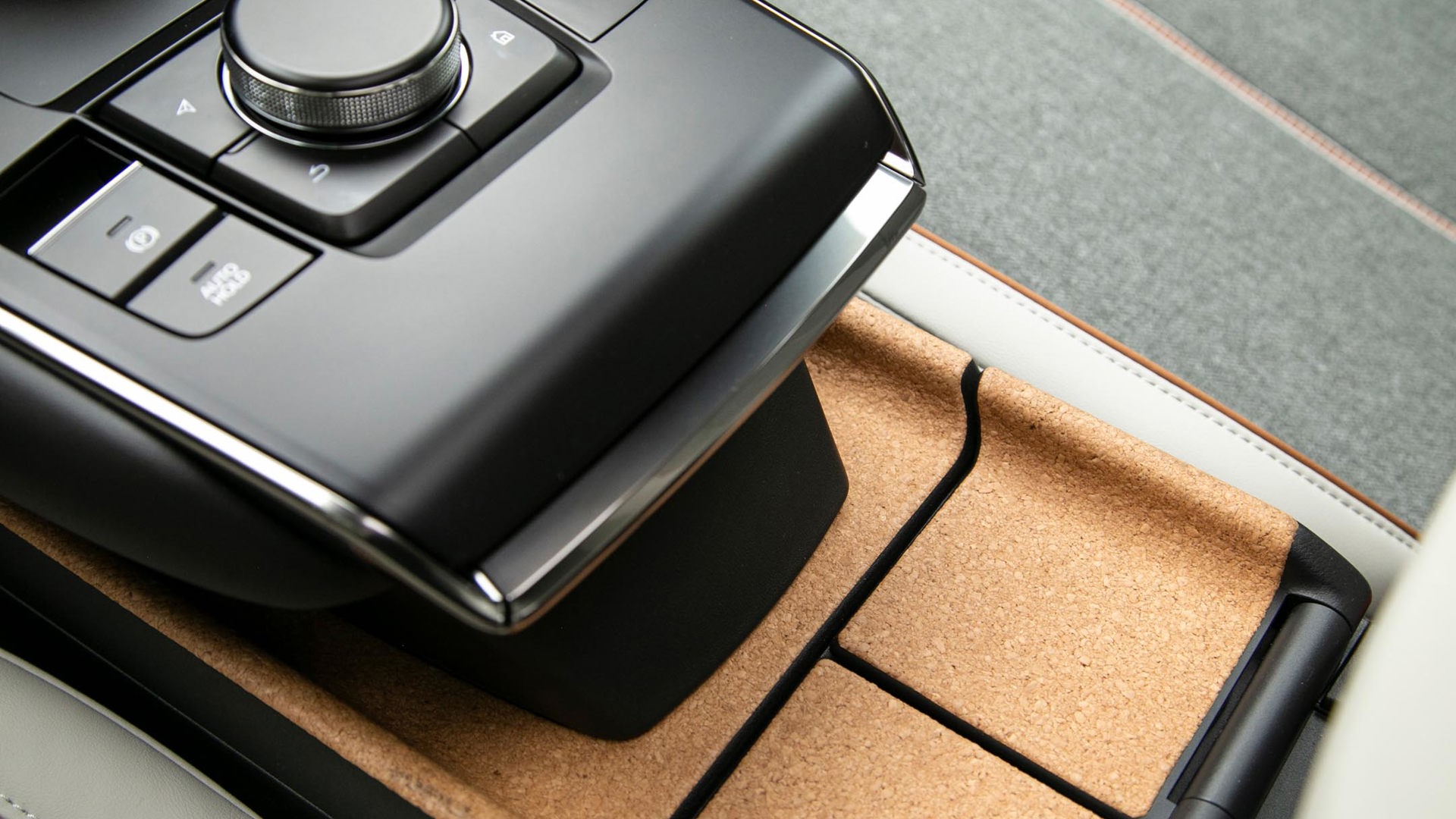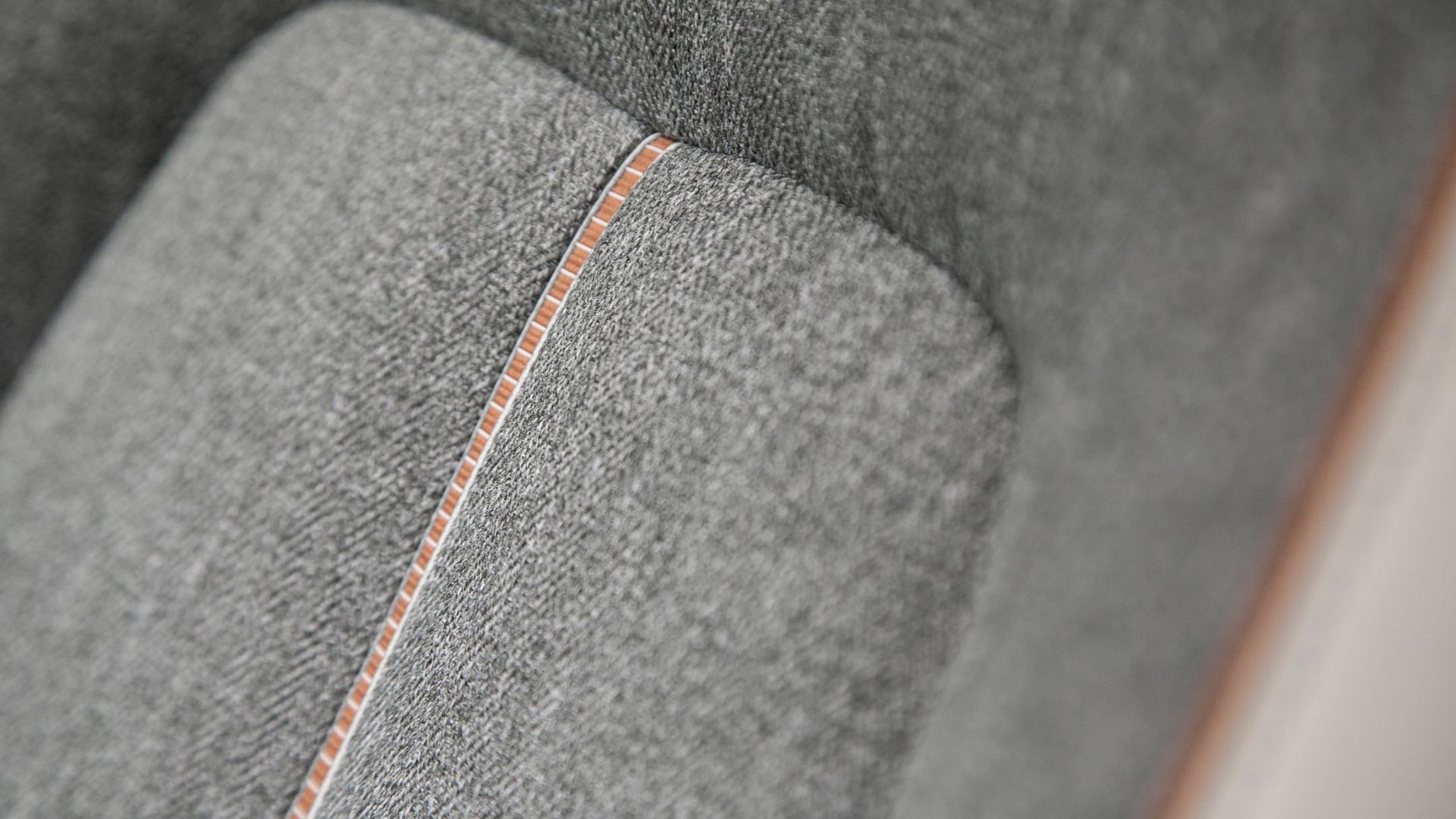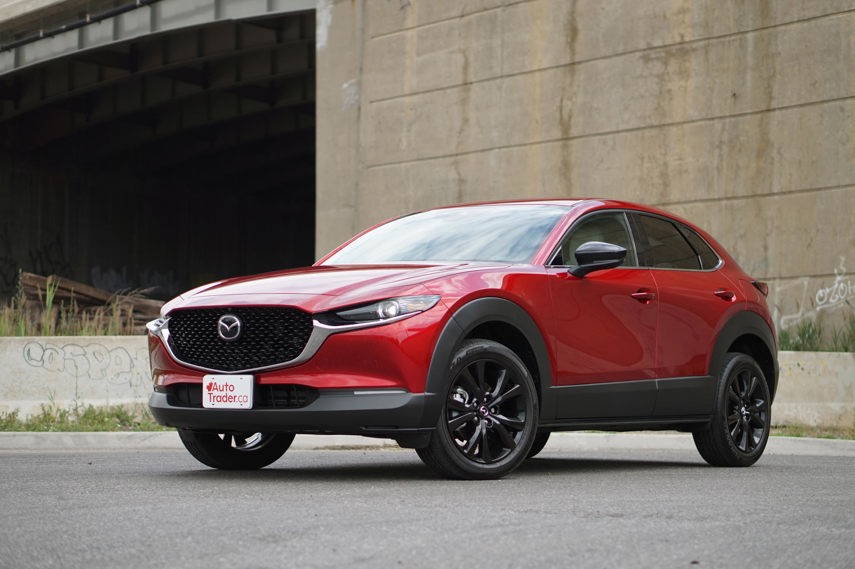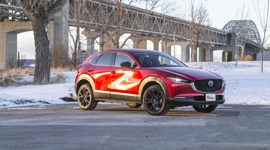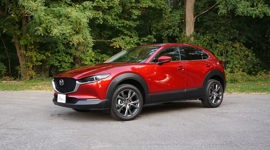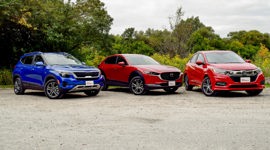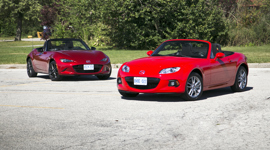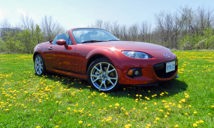It appears we’re now far enough into the age of electrification that we’ve moved past the part where every electric vehicle (EV) needs to be a homely hunchback with a singular focus on efficiency.
There’s some real originality emerging across the industry, and the individuality of the automakers is being reflected in many of these new machines. While some EVs are jammed with massive battery packs in the relentless quest for ever-greater range, the 2022 Mazda MX-30 takes an altogether different approach as a stylish EV that’s surprisingly engaging to drive.
What Is It, Anyway?
The MX-30 is a compact crossover that shares some basic underpinnings (and relative dimensions) with its CX-30 cousin, and it’s Mazda’s first electrified offering in North America (there have been previous hybrids and EVs offered in other parts of the world). The MX-30 is the launch point for a succession of future electrified vehicles based on this new scalable EV platform that will include both hybrid and full-electric variants, while this particular model will soon spawn a plug-in hybrid (PHEV) version next year that’ll marry battery power with a rotary engine.
Cool, but How Far Can It Go?
For now, the only MX-30 is this full-EV version. Despite efficiency and range being the primary reasons Canadian EV buyers choose an electric car, according to the automaker; Mazda set out to build an environmentally-friendly machine that offers good value and a rewarding drive experience – but not one with cross-country range.
The thermally regulated 35.5-kWh lithium-ion battery is on the small side, but it’s competitive with the likes of Mini’s electrified three-door and the base Nissan Leaf, giving the MX-30 a range of 161 km of combined highway and city driving. A planned drive route used during a media drive event consisted of a fairly even split of both highway and city driving, and while the range meter showed an optimistic 191 km with a full charge, the highway speeds and heavy-footed acceleration of your reviewer resulted in a low-juice warning before even reaching the end of the 118-km loop.
Mazda defends the MX-30’s modest range by pointing out that 86 per cent of Canadian households with EVs also have a second vehicle in the garage that can be used for longer trips. It might seem like a bit of a cop-out, but driving an EV typically allows a driver to set out from home with a full charge, and often the ability to top up while at work, running errands in the mall, or having a meal, mitigating the range concerns at least somewhat.
For buyers Stateside, Mazda USA is providing access to a program that offers the use of any other Mazda model for as long as 10 days per year, free of charge. That means our American friends can take that family road trip in a shiny new CX-9. Unfortunately, Canadian buyers are out of luck, as the program isn’t being offered here.
So What About Charging It?
The MX-30’s small battery can be charged in 36 minutes when plugged into a Level 3 DC fast-charger, but it’s limited to 50-kW peak charge speeds. A 240-volt Level 2 charger requires just shy of three hours to juice up, while more than 13 hours are required on a Level 1 plug-in – otherwise known as a household power outlet.
Mazda Canada has partnered with ChargePoint and is offering buyers a $500 credit that can be applied to a fast charger installation at home, or toward use at the hundreds of thousands of ChargePoint chargers across the country.
OK, Let’s Talk Driving
What the MX-30’s small battery trades off in range it gains in driving engagement. The battery pack weighs in at 310 kg (683 lb), but it’s situated in the floor, creating a centre of gravity more than 51 mm (two inches) lower than Mazda’s already frisky CX-30 crossover. What’s more, the motor unit is placed up front where an engine normally resides, but weighing only 130 kg (287 lb), it creates a fore–aft distribution of mass with a 60 per cent rearward bias, evening out tire load to improve grip and handling.
Add in a structure that’s 45 per cent stiffer than the CX-30’s, and tires that are also 15 per cent more rigid, and suddenly Mazda’s got an EV that’s properly engaging to drive. With the latest version of the brand’s torque-vectoring system employed too, it’s very stable whether turning or braking.
The MX-30 tops the CX-30 by 136 kg (300 lb) of mass, and yet it feels much happier being tossed around corners than expected, and certainly more so than most other value-centric electric vehicles. Mazda’s chassis engineers deserve a tremendous amount of credit for masterfully balancing exceptional body control and handling with a supple ride. It’s the sort of sophistication in suspension tuning usually reserved for cars costing twice as much as the MX-30.
Steering is quick and precise, but lacking in feel, and the Bridgestone Turanza tires can be easily overwhelmed, especially in the wet, casting a spotlight on Mazda’s decision to make the CX-30 front-wheel drive only.
While the MX-30’s 143-hp output may sound a bit weak-kneed, the immediacy of its 200 lb-ft of torque helps the 1,658-kg (3,655-lb) crossover accelerate with reasonable authority. Still, where other EVs offer thrilling forward thrust, especially from a standstill, the MX-30 feels more managed, and it is. Mazda’s engineers worked hard to make the power delivery more precise and measured, softening the jerkiness that some EVs present. It’s a refined approach, but does dampen part of what makes modern EVs so appealing to zip around town.
Similarly, considerable effort has been spent on creating a very natural and linear brake feel – something that’s rarely found in EVs – even as the MX-30 transitions between regenerative and friction braking. The steering wheel paddles don’t switch any gears, but allow the driver to select the aggressiveness of regeneration on the fly, transitioning between a very mild, almost free-wheeling sensation, through a few steps toward the most aggressive regenerative braking, which is still too mild to afford true one-pedal driving.
Style and Space
The MX-30 bears plenty of Mazda family resemblance, but there are a few key areas of departure from anything else in the family lineup. Notably, the front grille space is minimized, and the slope of the roofline into the hatchback is more aggressive than on Mazda’s other crossovers. The two-tone colour treatment of the tester seen here looks slick and contemporary, and the rear-hinged rear doors help reinforce a sporty hatchback profile, even if they aren’t as practical as traditional doors.
The interior is finished in high-quality sustainable materials. The seats are particularly stylish with their tweed-like fabric accented with leatherette bolsters. Occupant space both front and rear is decent for such a compact and sporty-looking machine, and the cargo hold swallows 1,053 L of stuff if the split rear seat is folded, and 431 L if it’s not. There’s no front trunk since that’s where the PHEV’s rotary engine will reside next year.
Door panels are made of recycled plastic bottles, and the genuine cork inserts are an homage to Mazda’s origins in the 1920s as a cork producer. And since the cork bark is harvested without felling the tree, it’s sustainable as well as fashionable.
While the seating position is great and controls mostly make sense, the decision to make the climate controls operated through a 7.5-inch touch display means fingerprints are going to torment obsessive-compulsive drivers. It’s largely redundant thanks to the buttons that flank the screen anyway, but the rotary-dial controller for the infotainment system remains, and while the primary screen does offer touch functionality, it’s fairly small and a reach for the driver.
One more nit to pick: the sizeable blind spots for the rear three-quarter view require good shoulder-checking practice, even if Mazda has implemented a new blind-spot steering assist function in its active safety suite.
How Much Does It Cost, and When Will It Be Here?
Shoppers sold on the MX-30 had better act fast to snag one of the 700 or so 2022 models destined for Canadian dealerships this October – but only if they’re residents of Quebec or British Columbia, the only provinces Mazda is offering it. At least we’re better off than in the United States, where even fewer MX-30 EVs will show up, and only in California.
Pricing is set at $42,150 for a well-equipped GS model, or $47,150 for a GT model that includes a number of tech-based upgrades. Freight wasn’t available at the time of this writing.
Final Thoughts
Mazda has spent decades cultivating a brand that’s associated with driving engagement, and more recently with refinement rivaling many premium brand offerings. The 2022 Mazda MX-30 suits this trajectory perfectly, and while its limited range may keep it off seasoned EV buyers’ shopping lists, for others, a fun-to-drive EV commuter could fit the bill perfectly. Now let’s see that rotary PHEV version.
